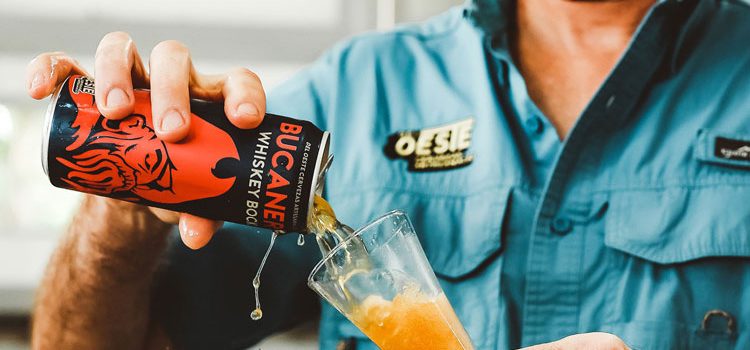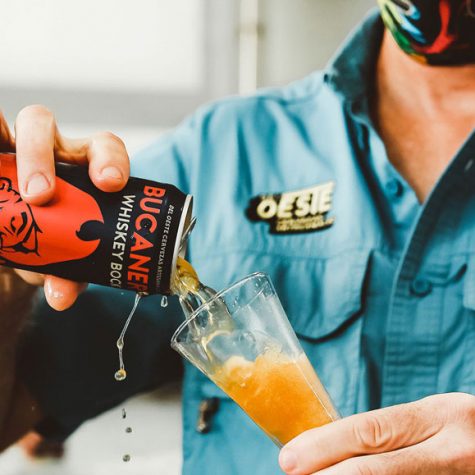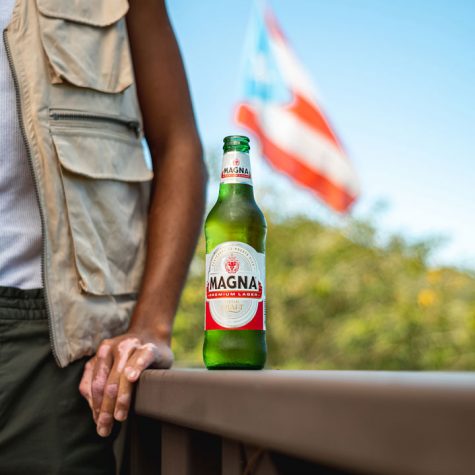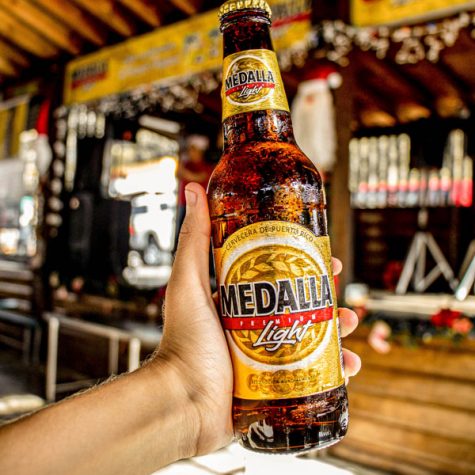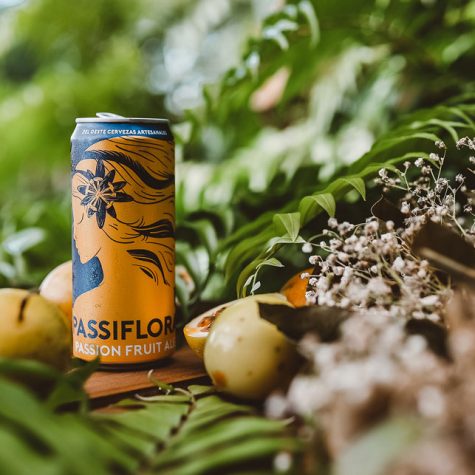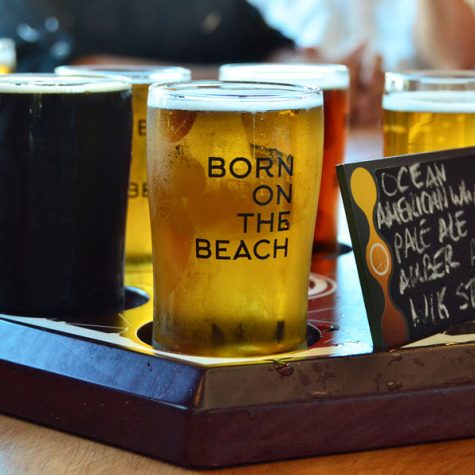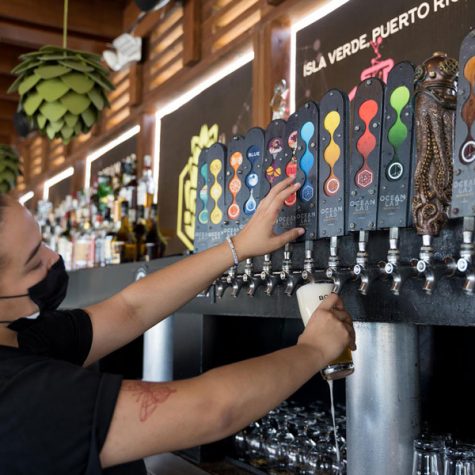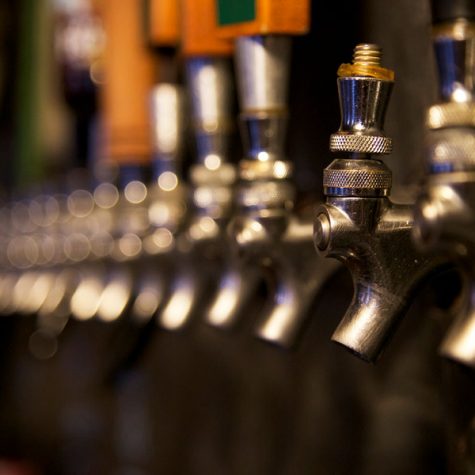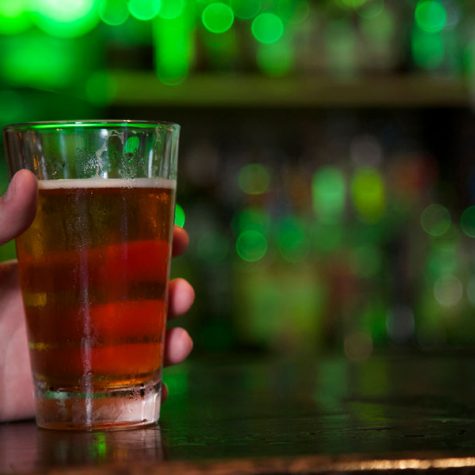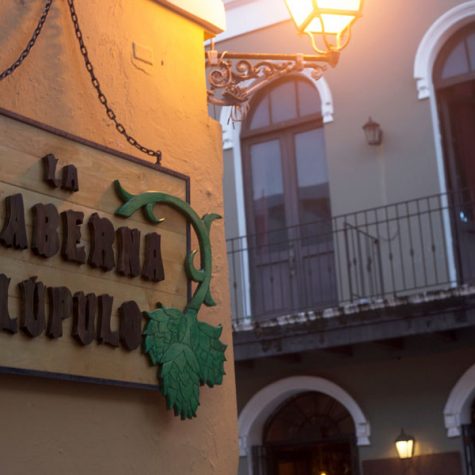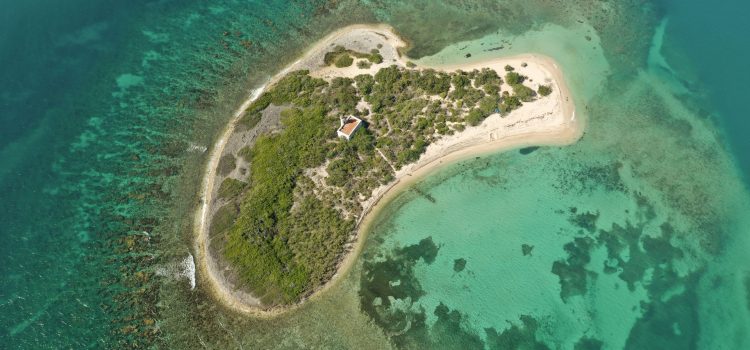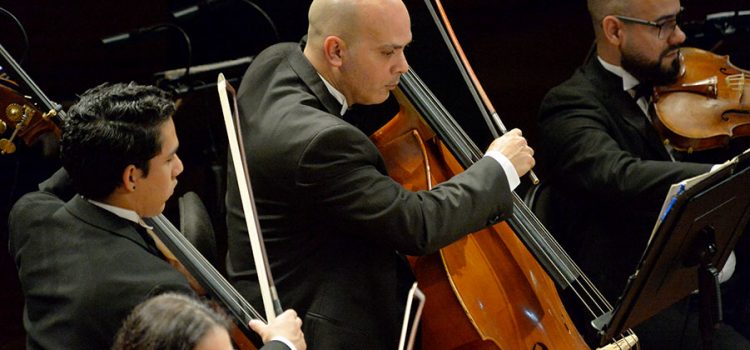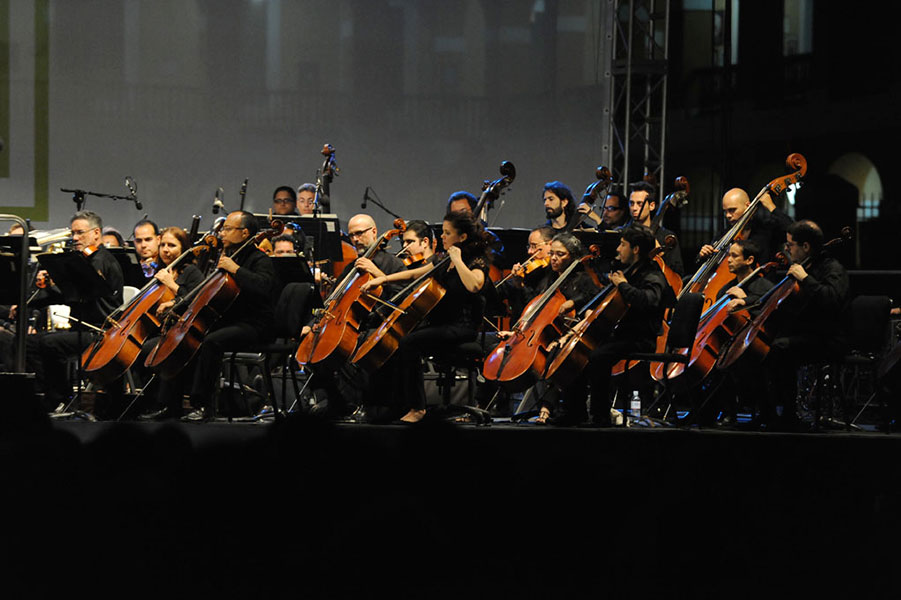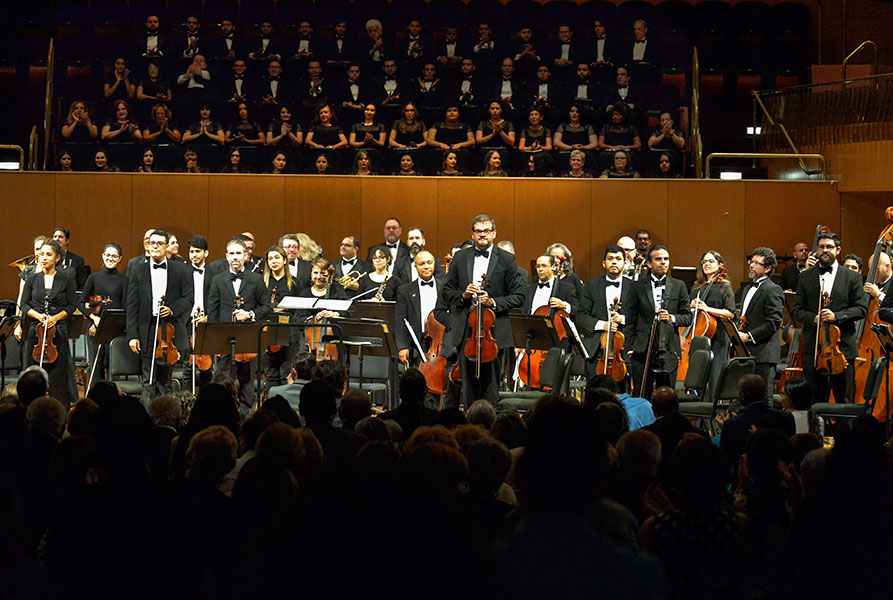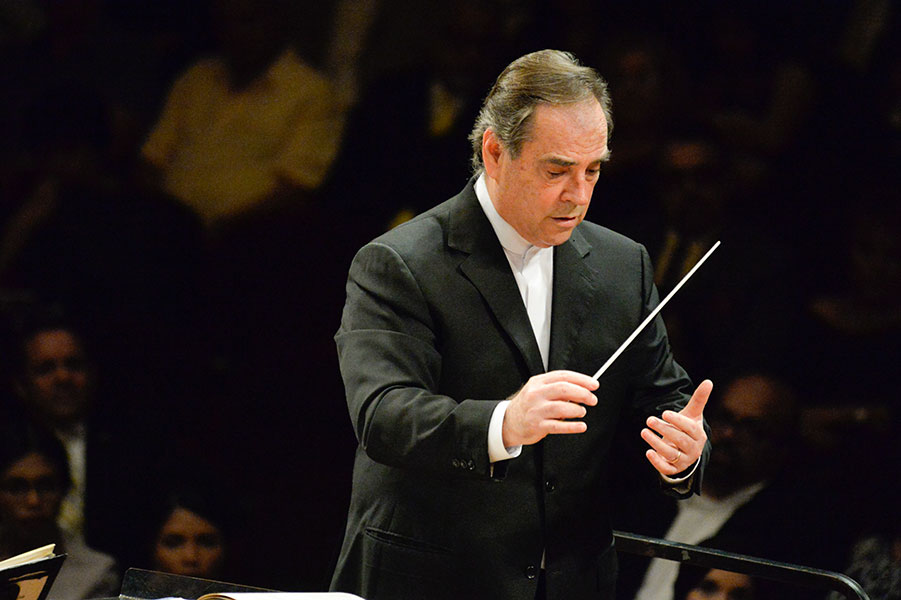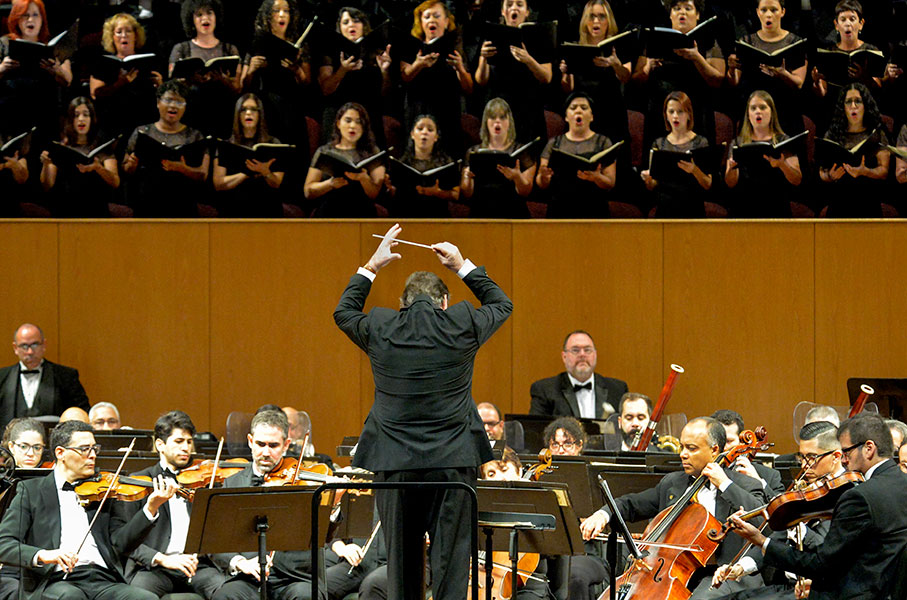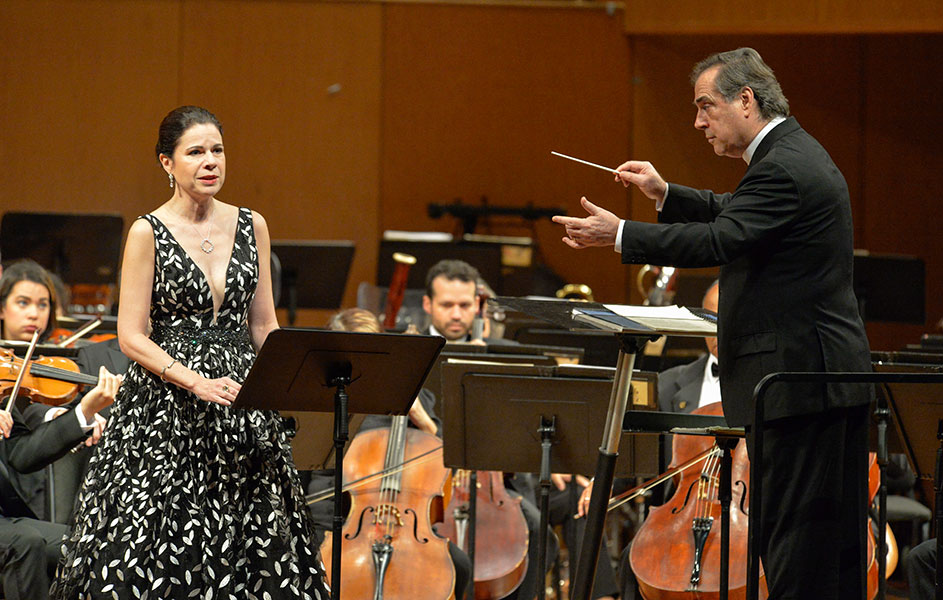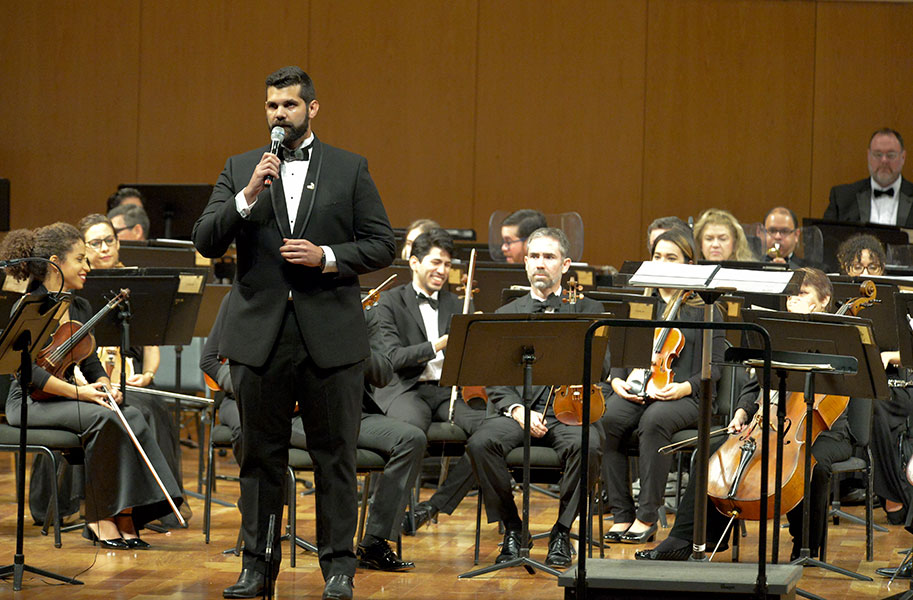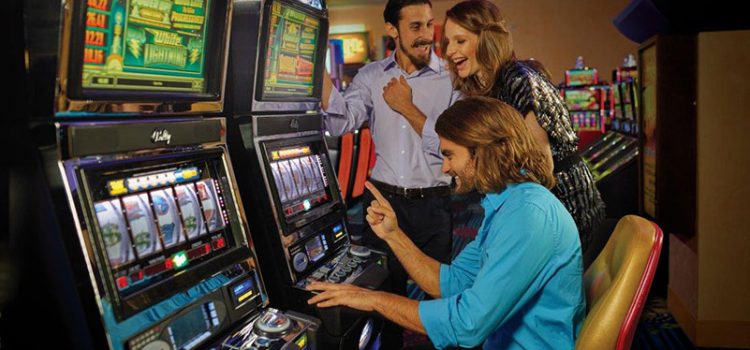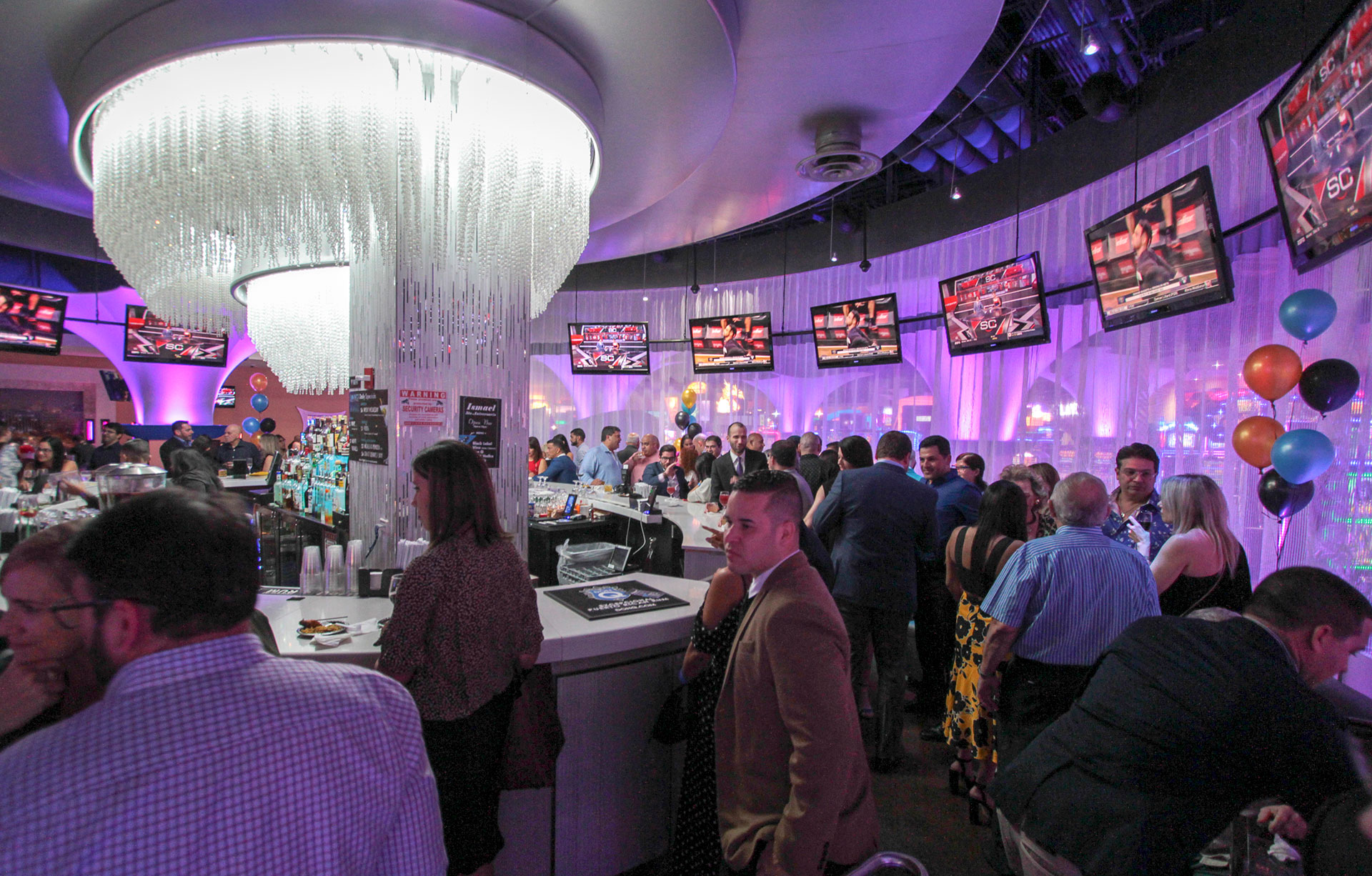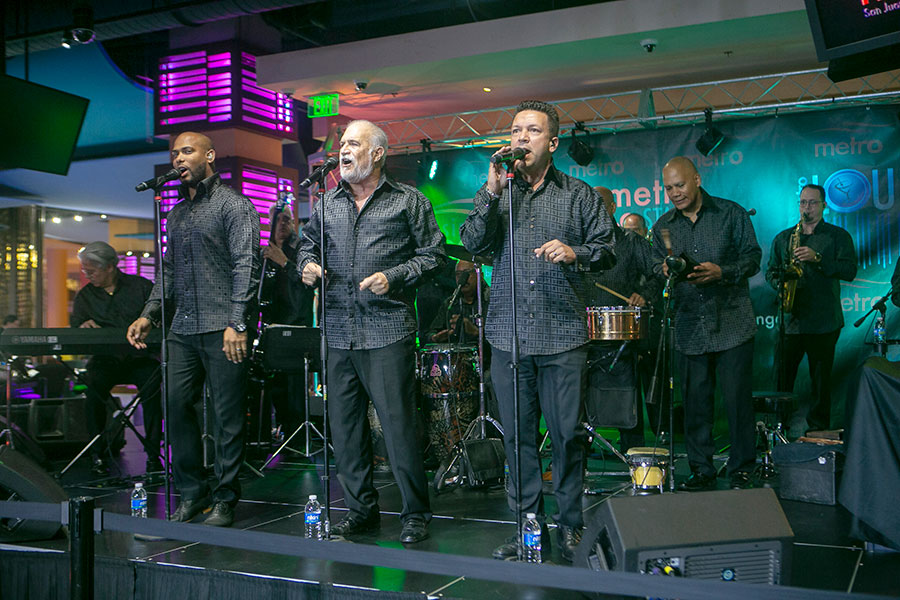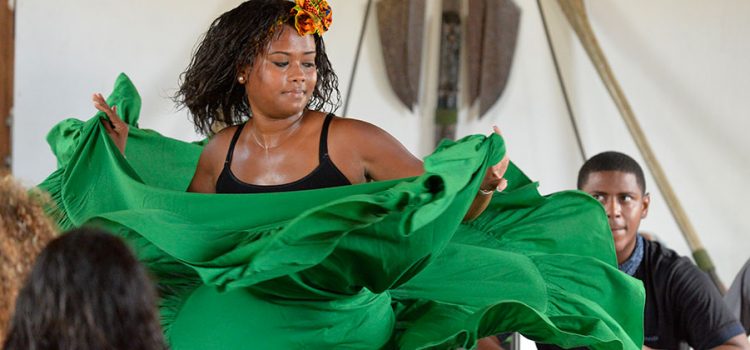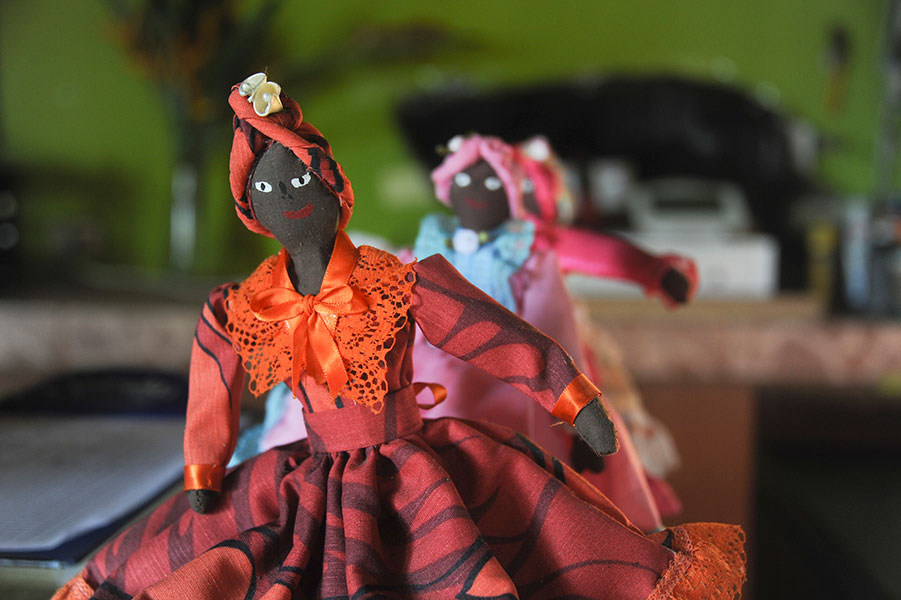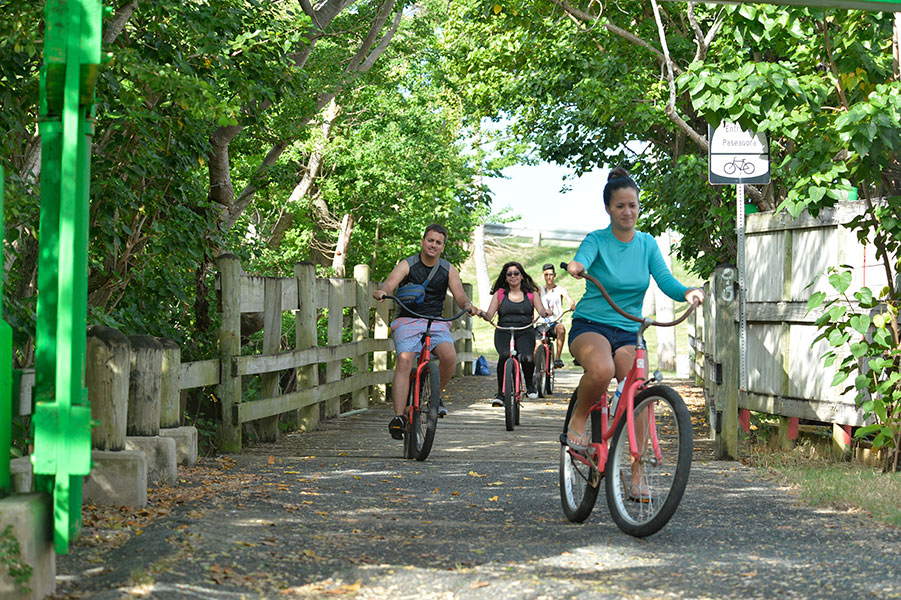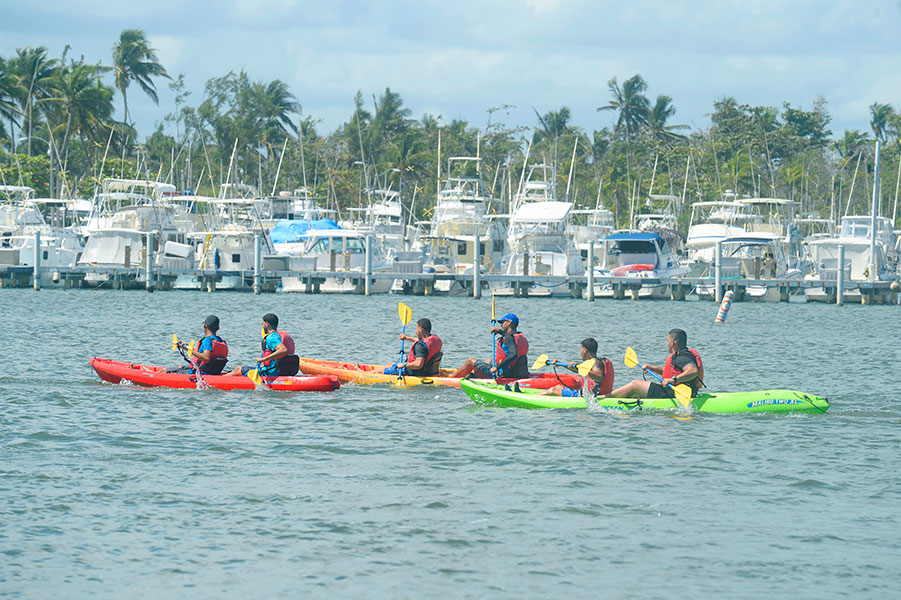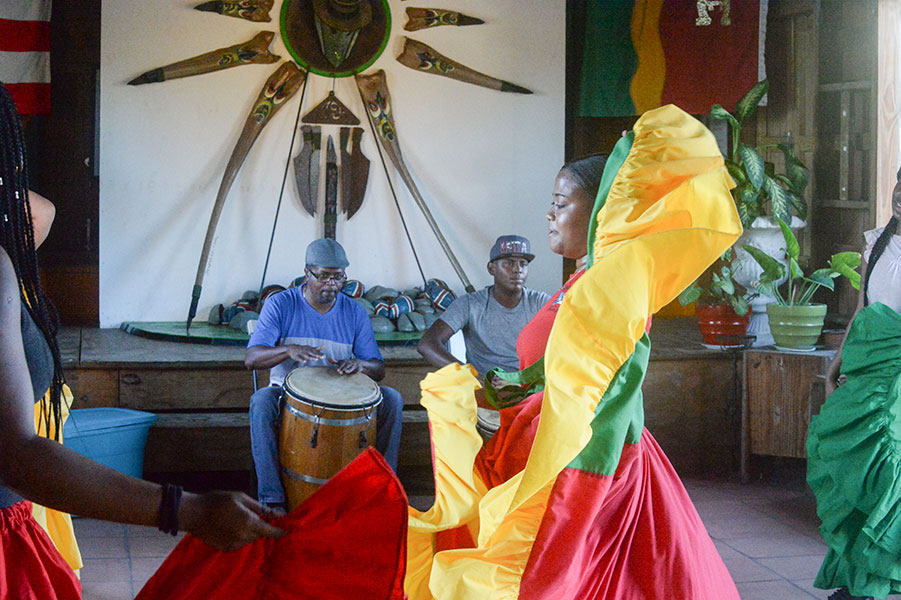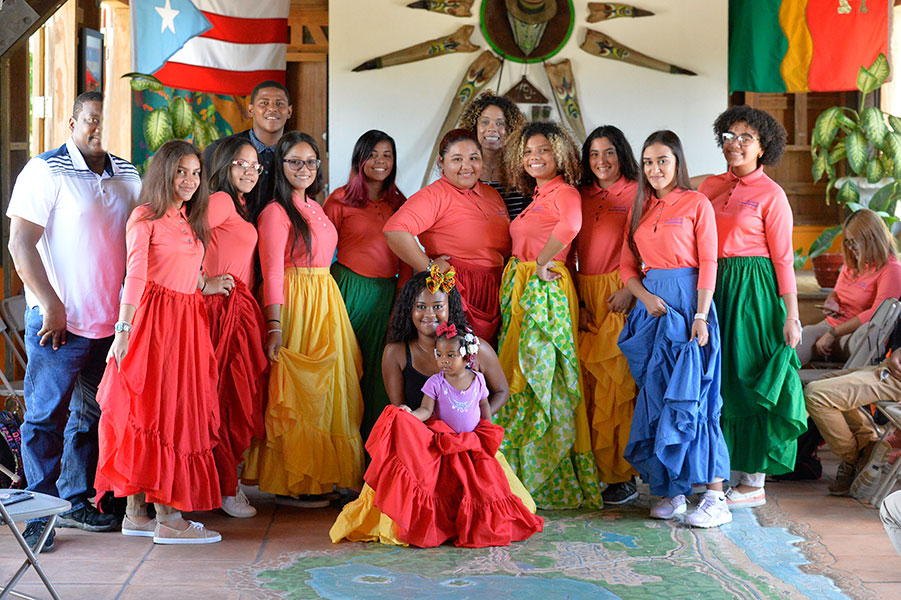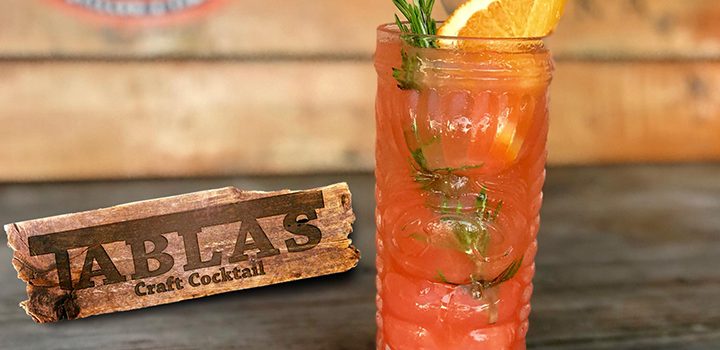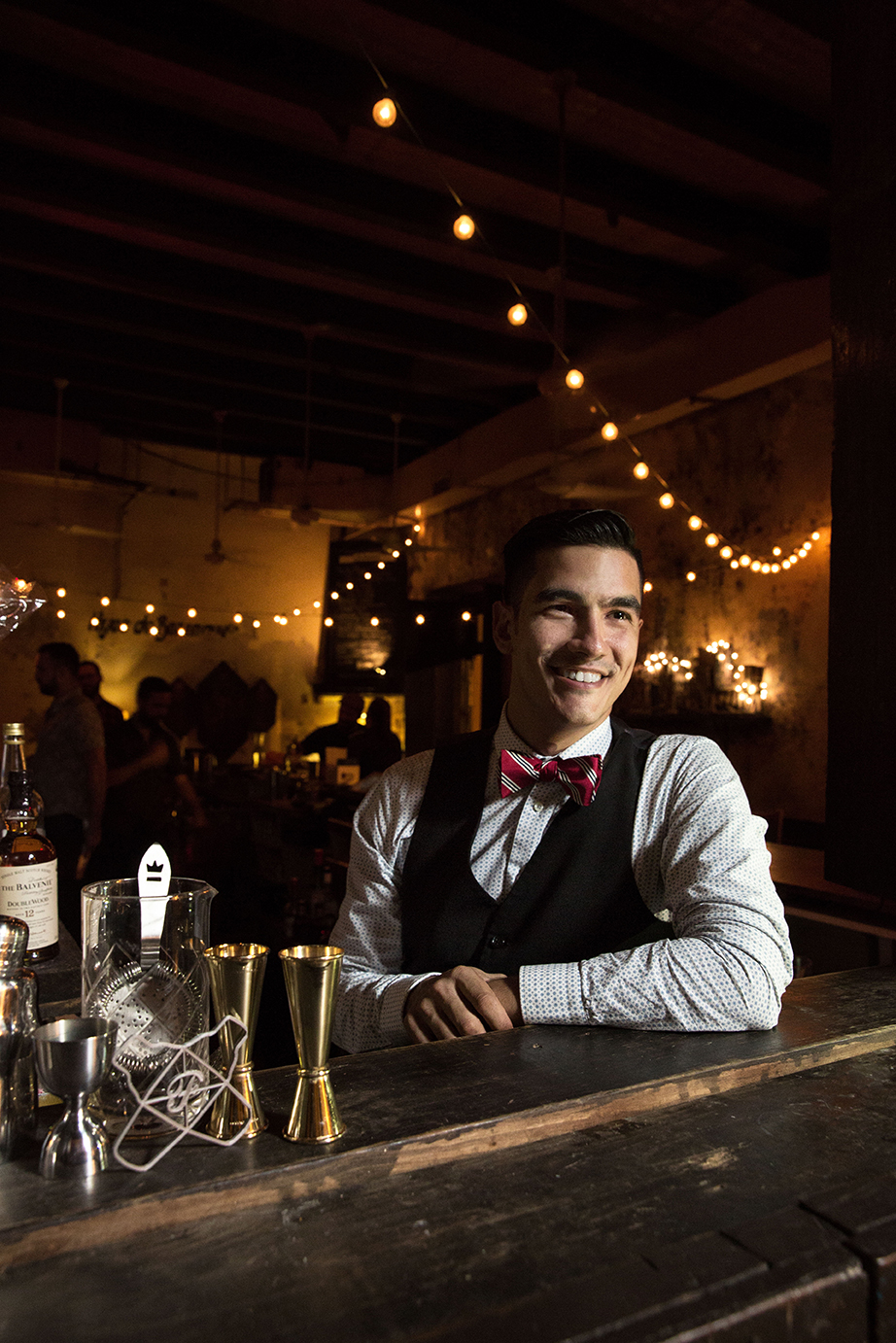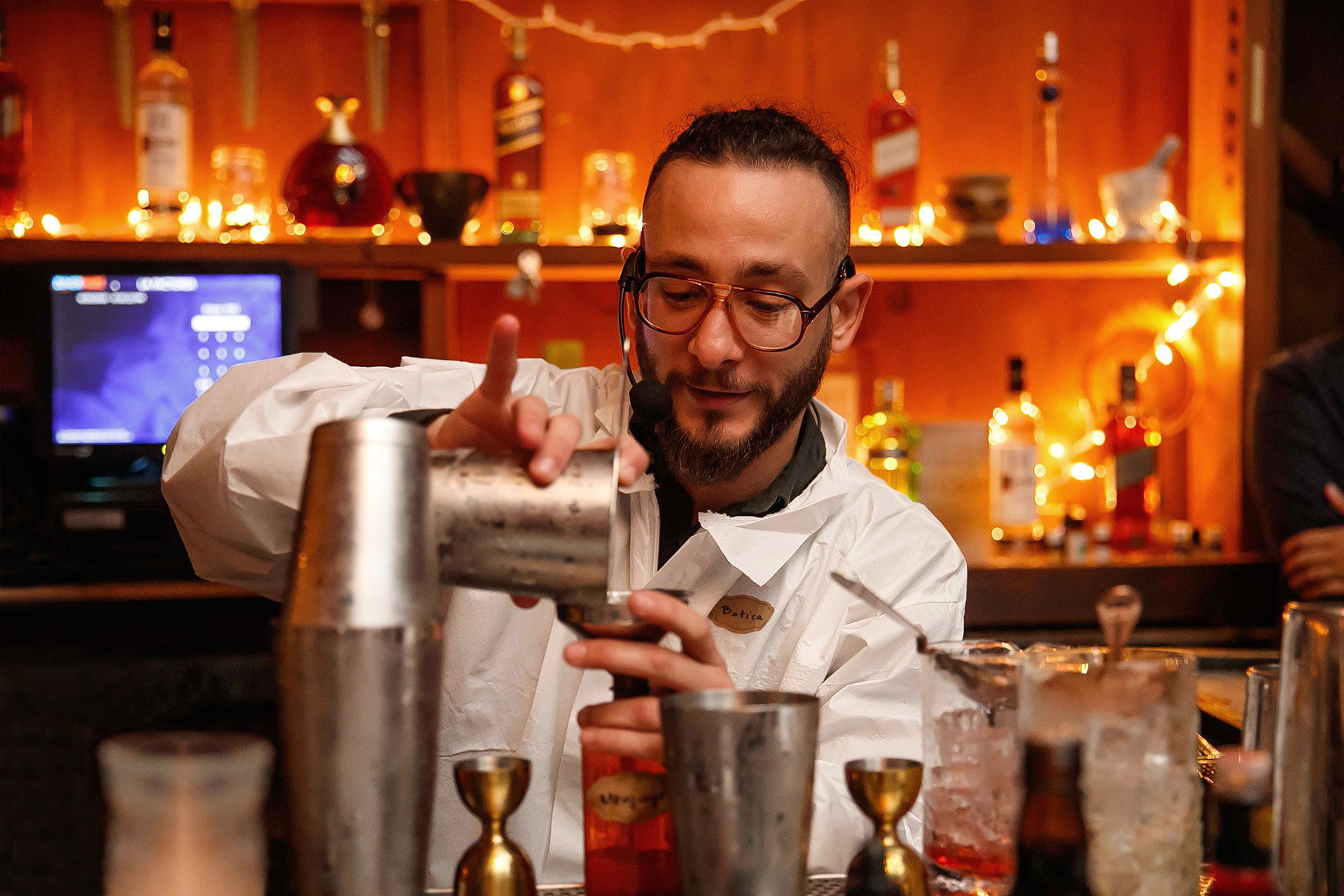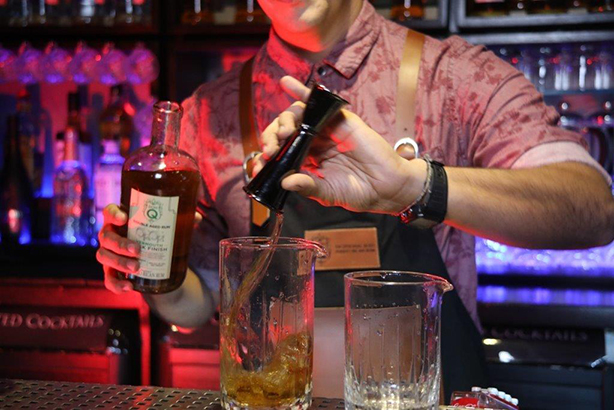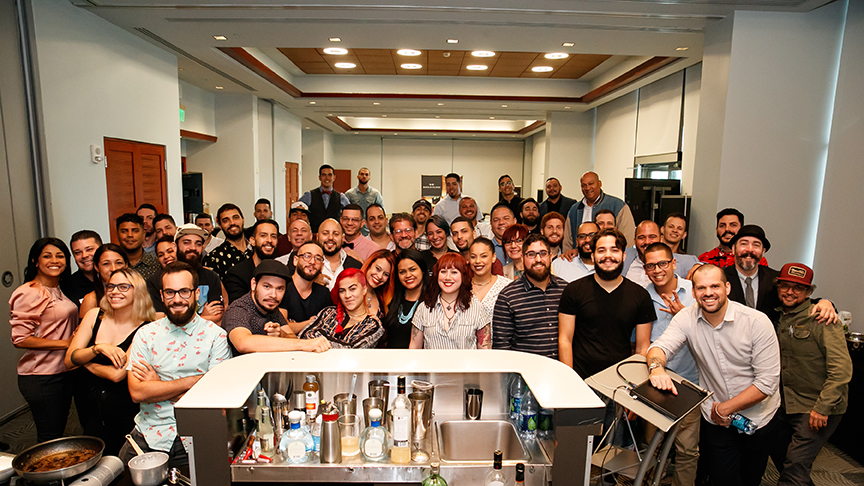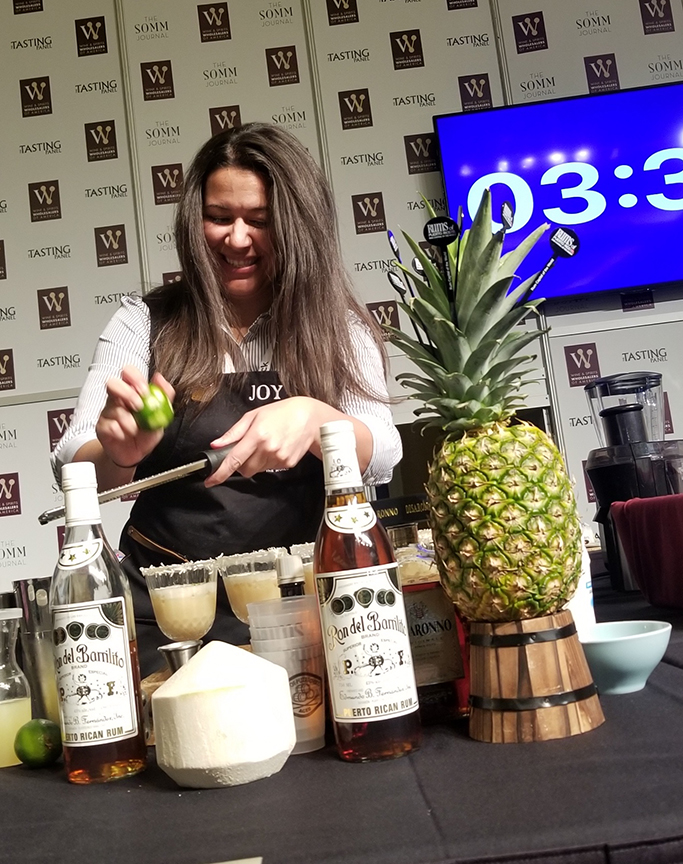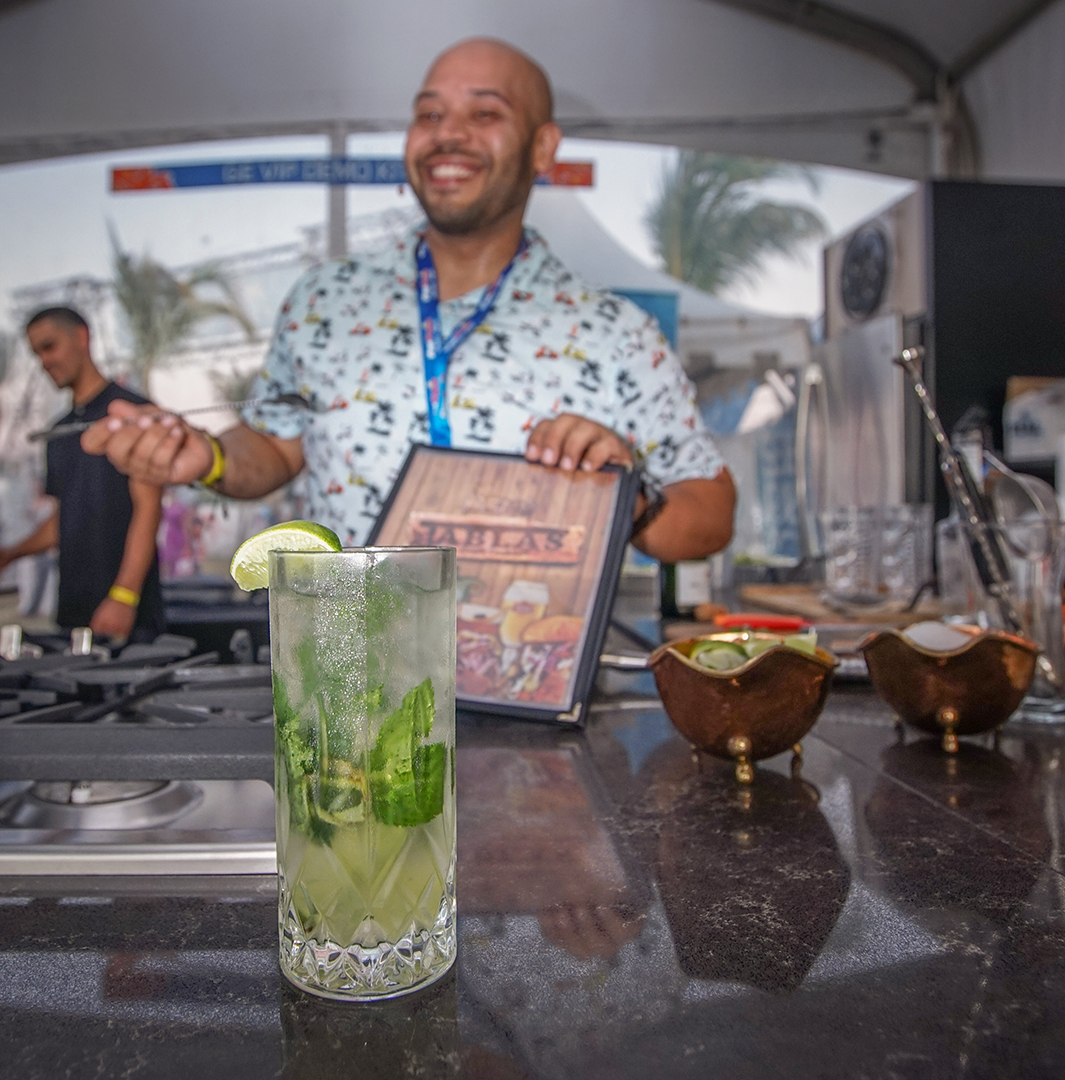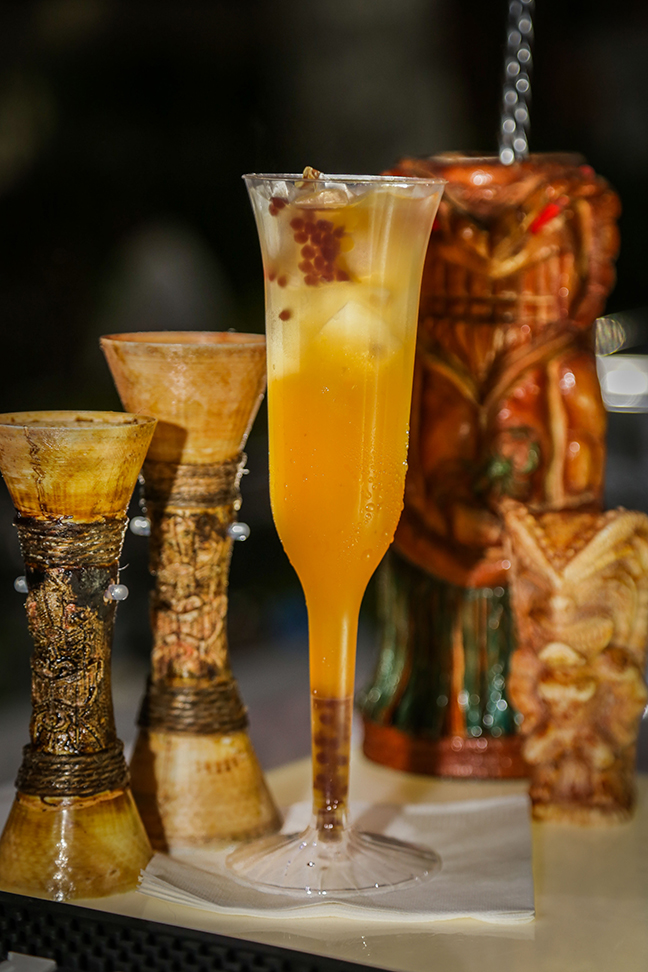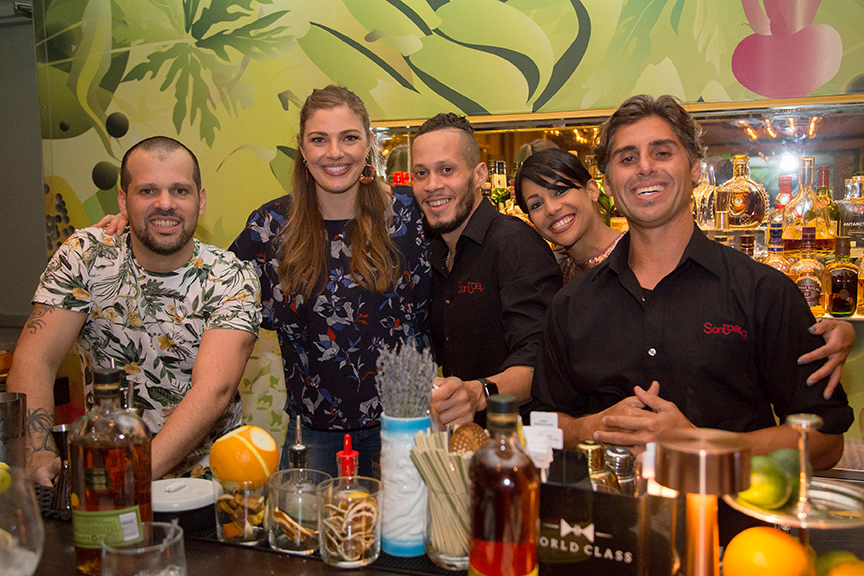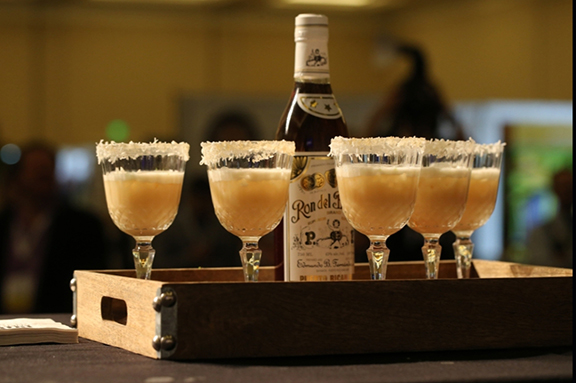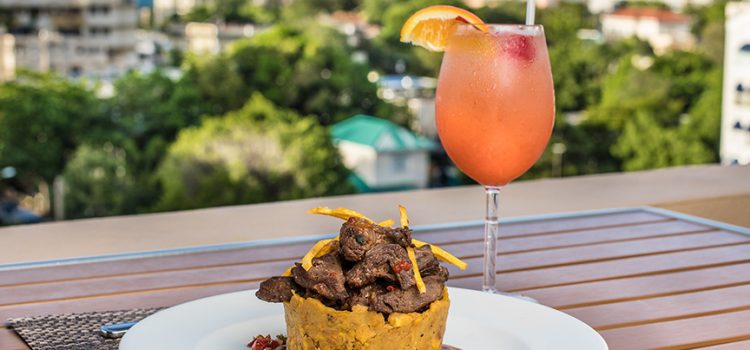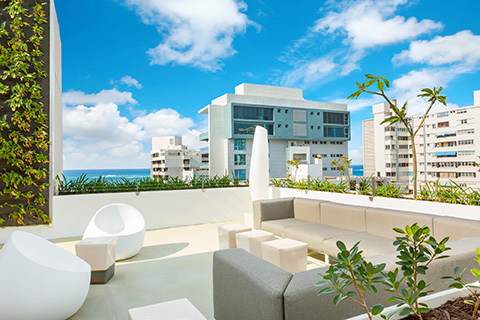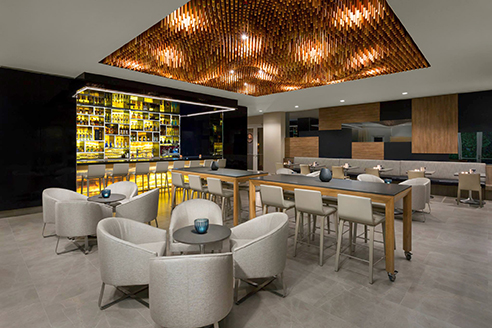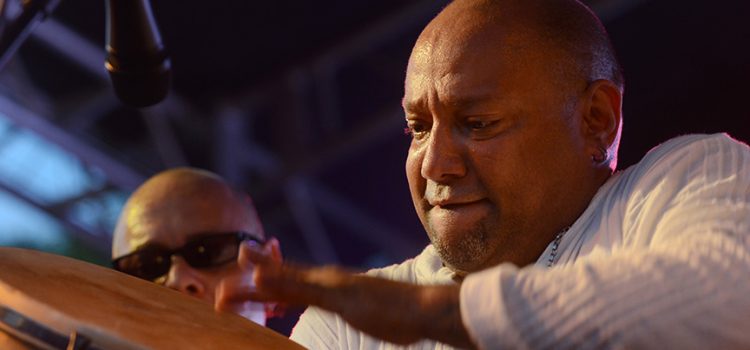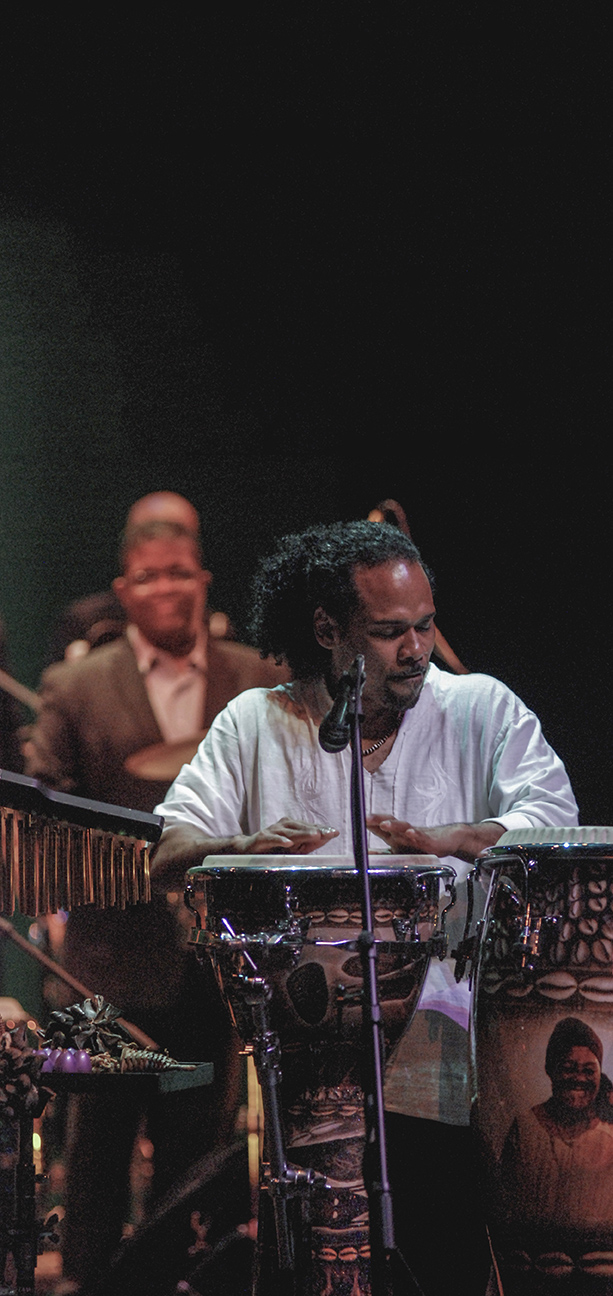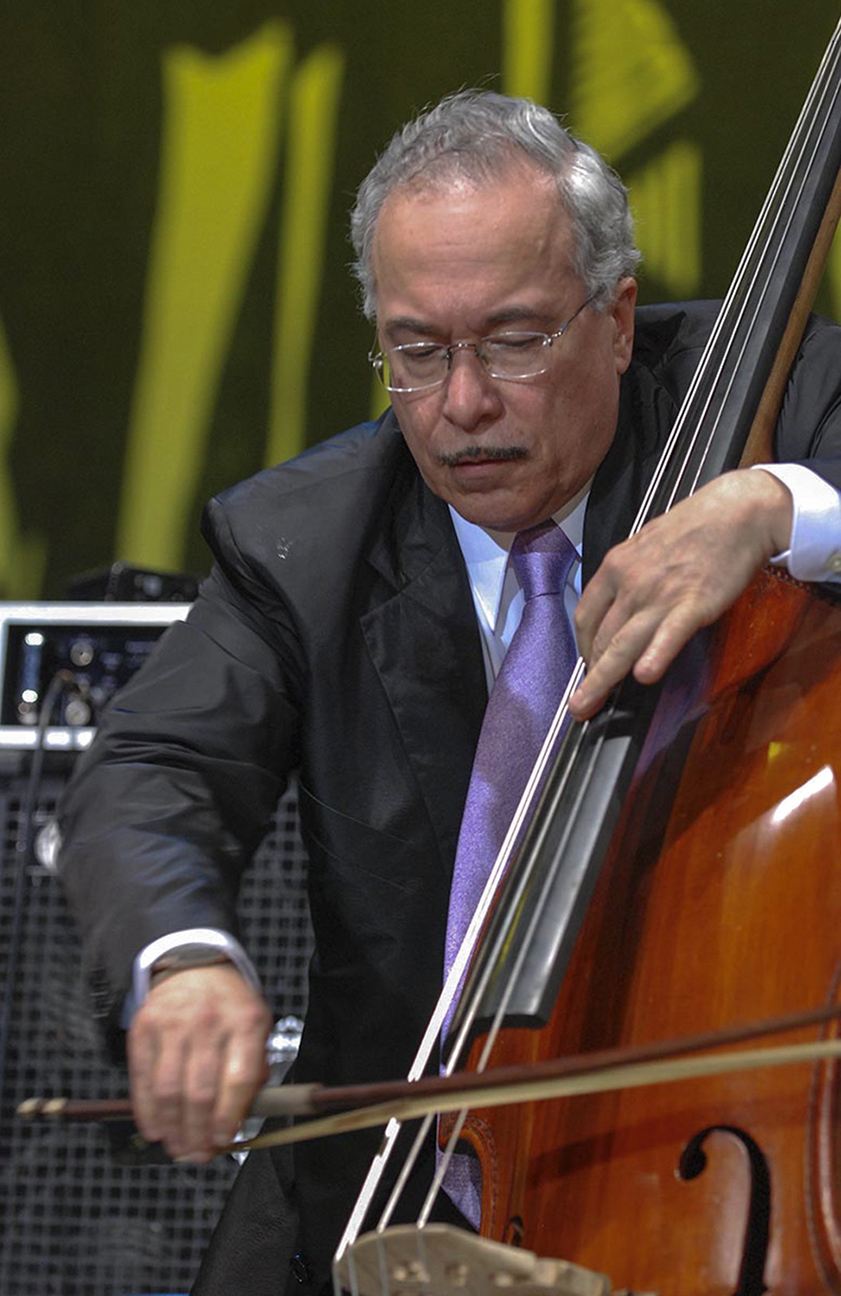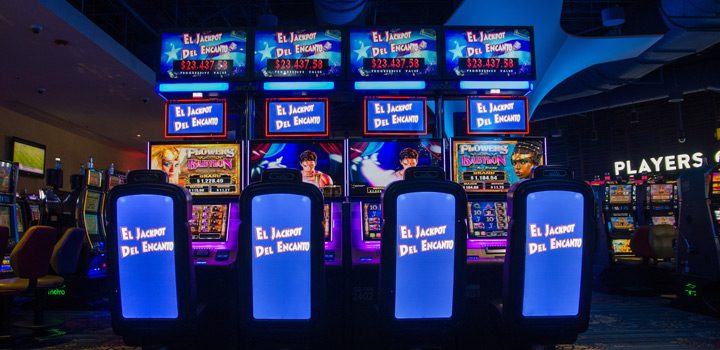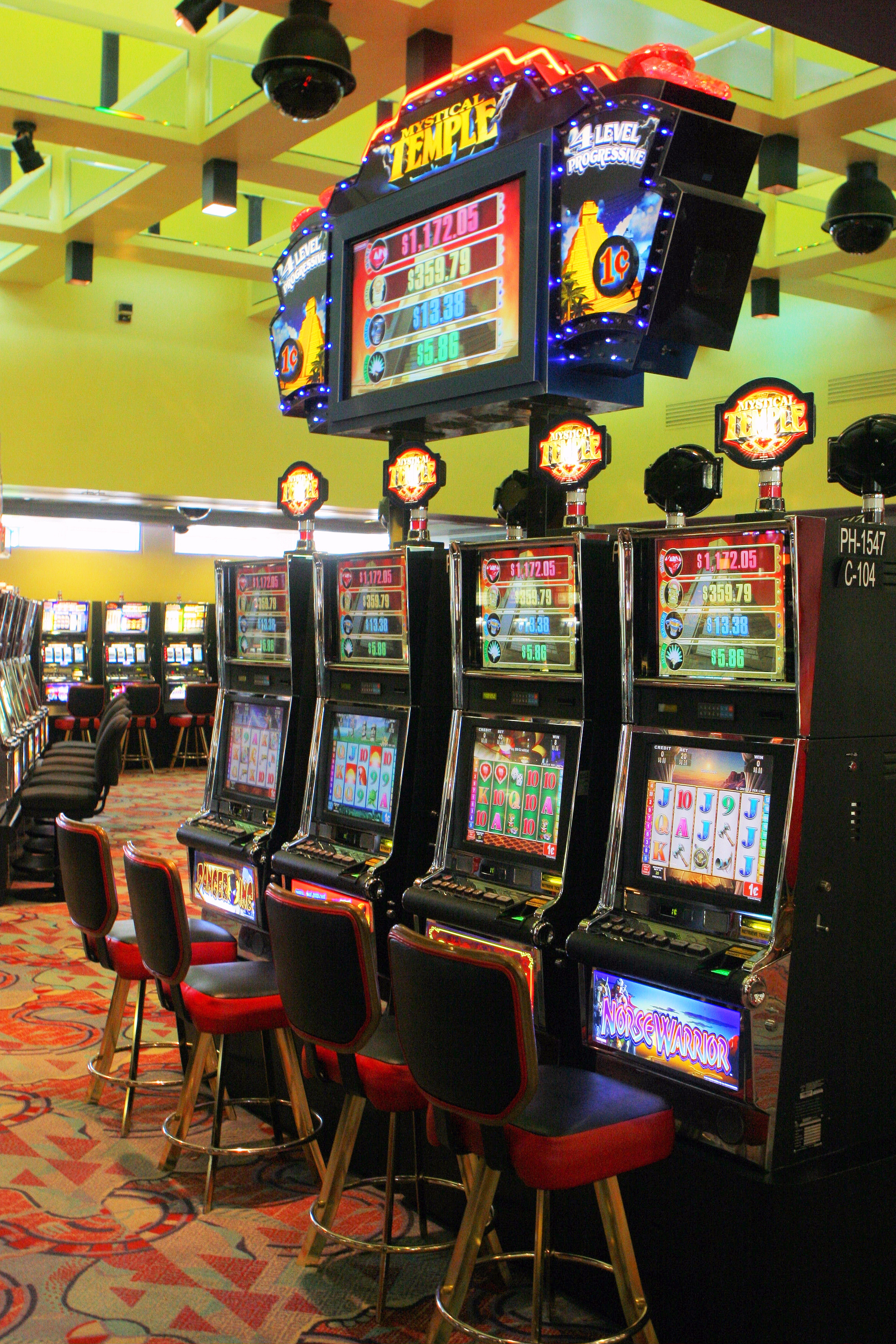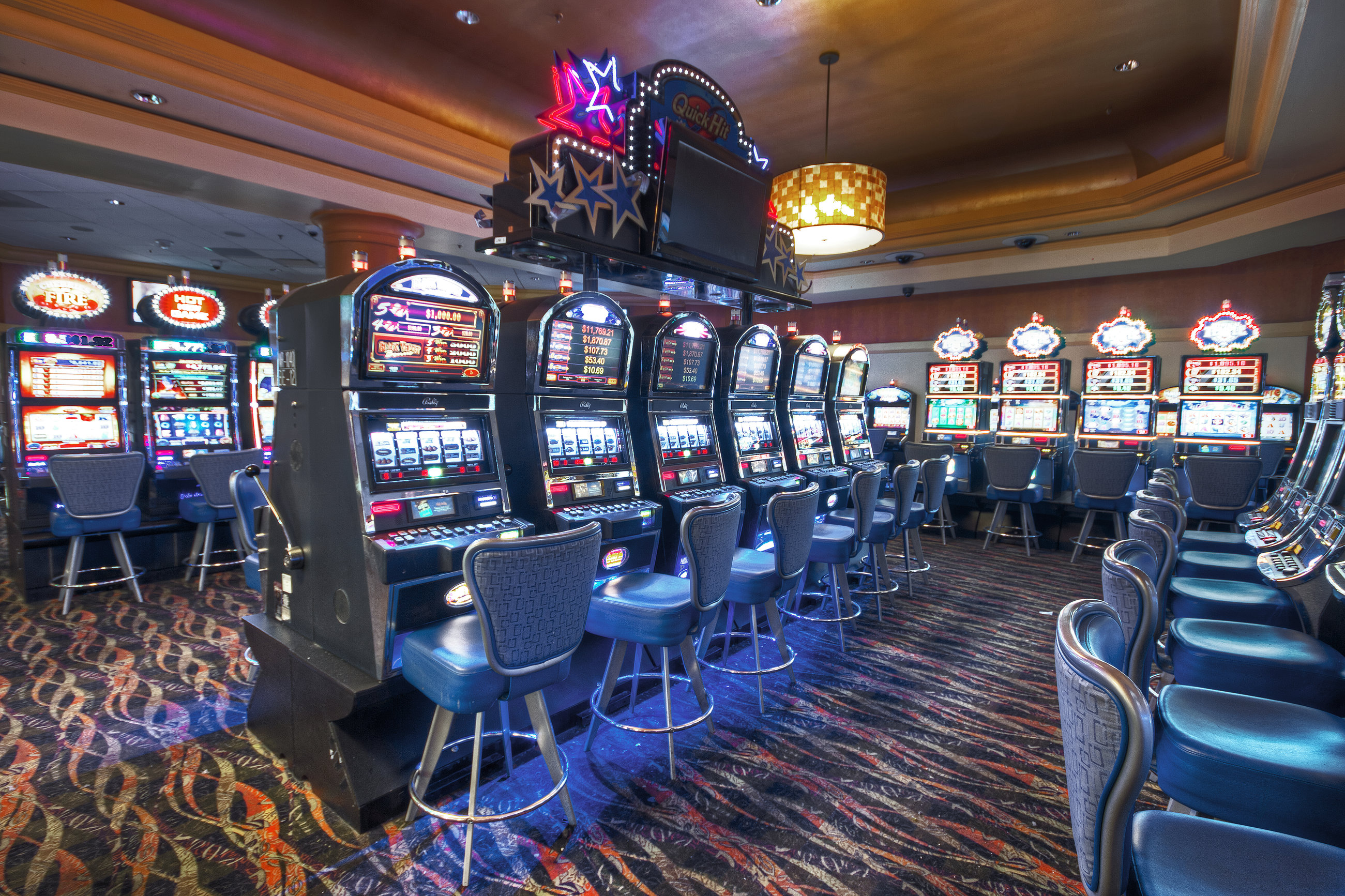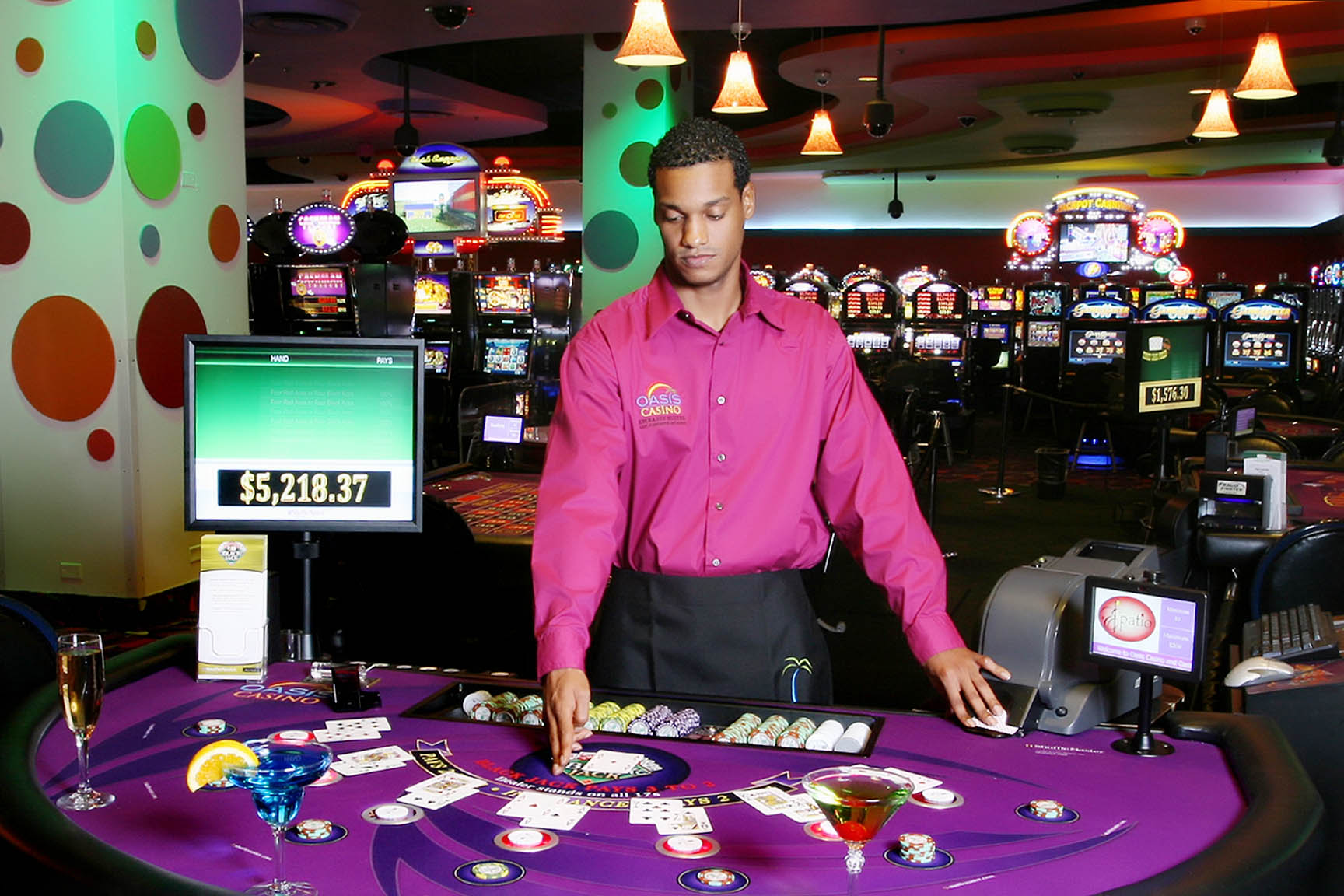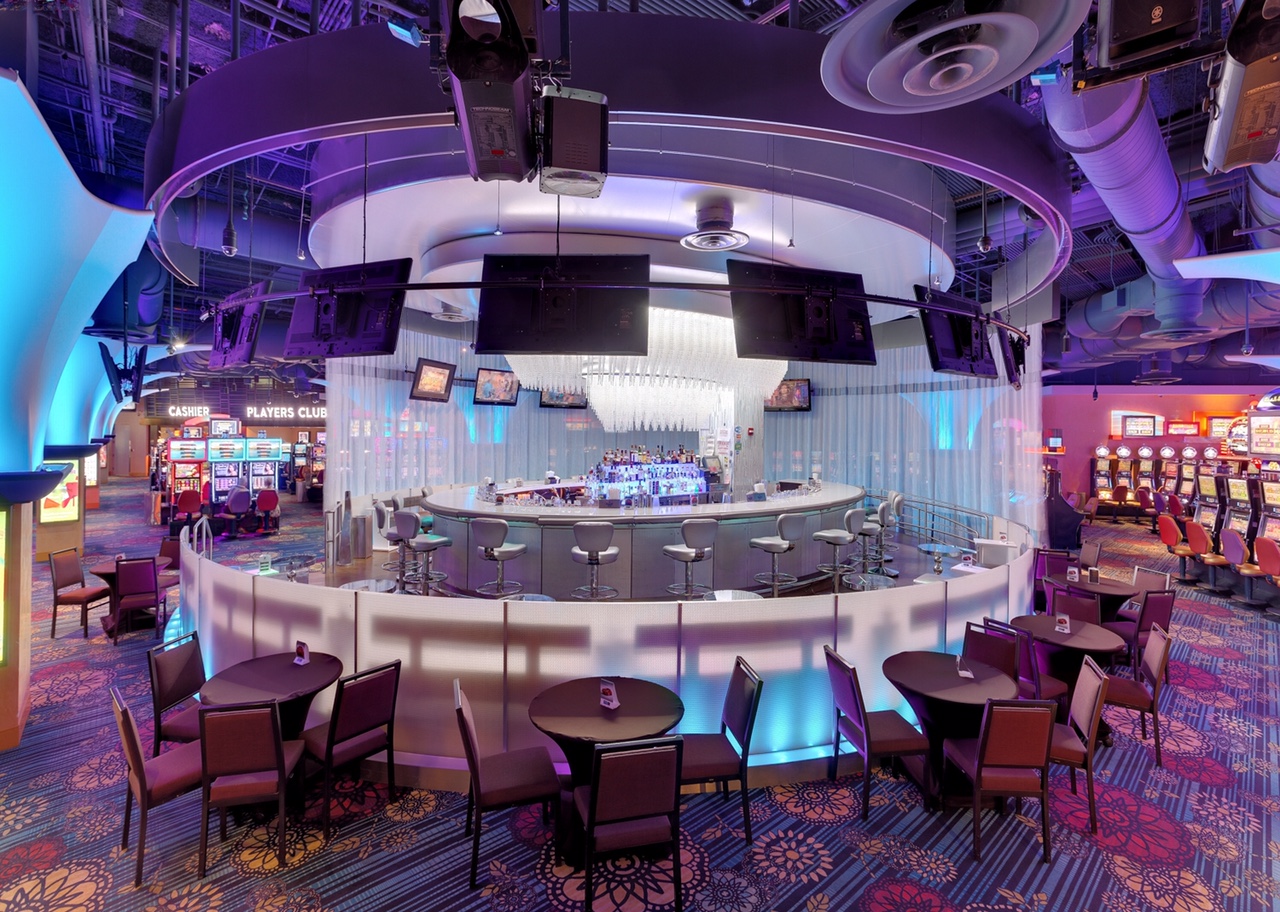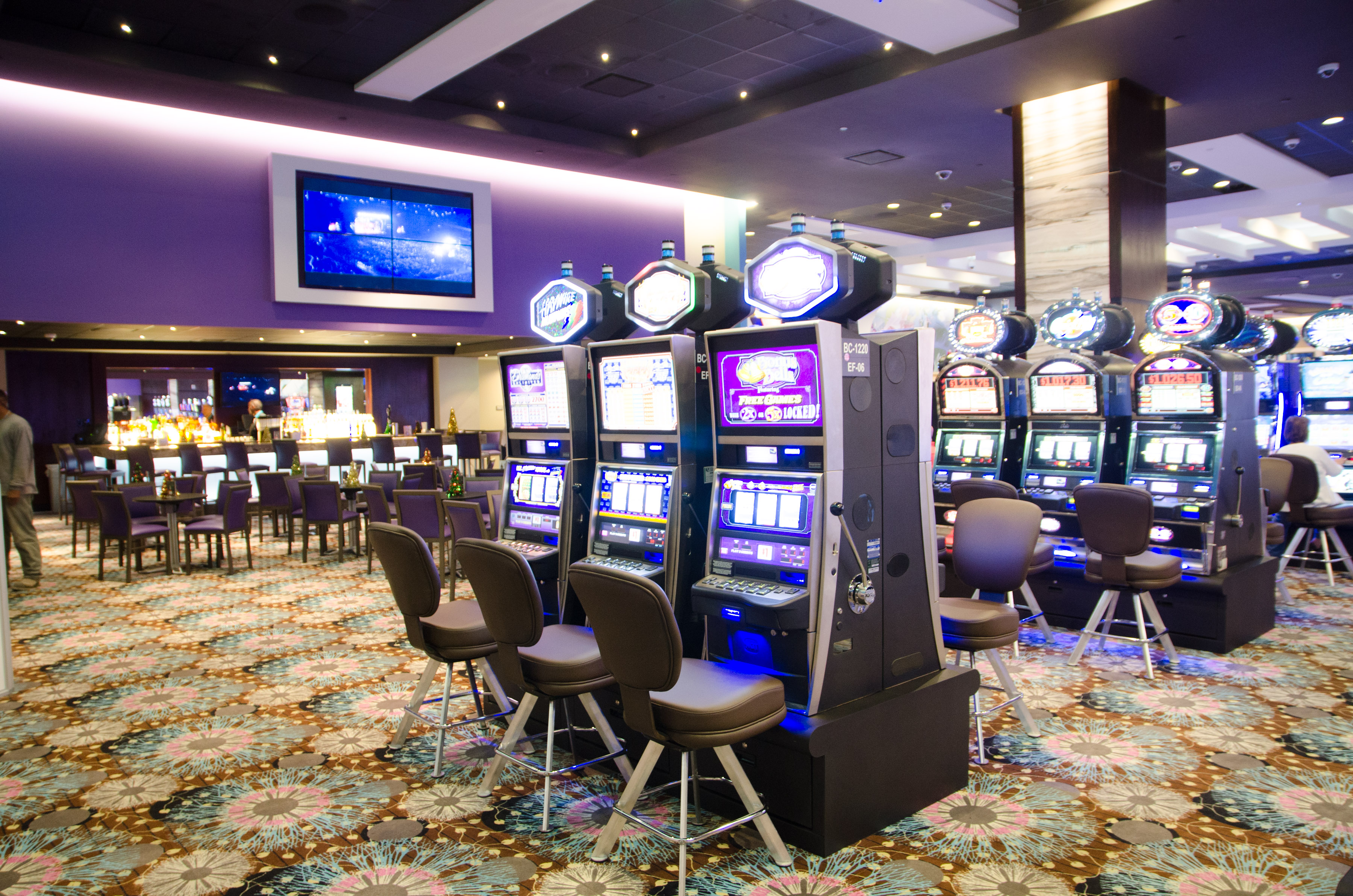A beer lovers paradise
Puerto Rico provides an endless array of postcard settings to soak up some of life’s simple pleasures – like kicking back with a few cold ones under the Caribbean sun, toes in the sand and an icy cooler close at hand.
Puerto Rico provides an endless array of postcard settings to soak up some of life’s simple pleasures – like kicking back with a few cold ones under the Caribbean sun, toes in the sand and an icy cooler close at hand.
The shining star of Boricua beers is still Medalla, a light and easy brew that pairs perfectly with Puerto Rican Street food and the fare at the island’s celebrated open-air chinchorros but can also hold its own with more complex culinary offerings in chic city hotspots. The Mayaguez-brewed beer is ubiquitous across Puerto Rico and has been making inroads into stateside markets.
But if one thing is clear in Puerto Rico it is that there is always room for more at the party. That generosity of spirit among islanders is matched by the stunning menu of fun on tap around the Enchanted Isle.
A great bet for brew lovers, or most anyone with a thirst for adventure, is to call on one of the growing number of craft beer bars that have been popping up in Puerto Rico in recent years. From cool locales carved out of Spanish-colonial townhouses, to sudsy chill spots along the coast, to hideaways high in the central mountains, Puerto Rico plays host to an impressive array of bars where beer plays the starring role.
And while these oases may be known for a dizzying range of international labels, homegrown microbrews are increasingly elbowing their way onto the ample lists of libations for thirsty travelers and locals alike.
Cervecera de Puerto Rico, the brewery that long-ago made its mark with Medalla Light and with Magna Premium Lager, has also tapped into the craft brew craze with Del Oeste, a line of small-batch beers created from top quality ingredients and named after island locales and lore. At last count, Del Oeste was producing nine different varieties: Bucanera Whiskey Bock; Bramadero India Pale Ale; Isleña Pilsner; Passiflora Passion Fruit Ale, Litoral Helles, Oktoberfest, Residente Tripel, and Residente Maibock.
A new wave of Puerto Rico craft beer makers can be traced back to 2017, where an entrepreneurial spirit mixed with drive to showcase the power of islanders, and to support local producers emerged. The island legislature even took note, passing legislation to foment small breweries with tax breaks and other incentives.
But there is no room here to keep tabs on all the branches of the budding brewery landscape. Suffice it to say that tasty cervezas are currently taking shape in far-flung corners of Puerto Rico. In the meantime, there is no shortage of stellar craft beer bars to satisfy all tastes.
Bienvenidos has listed some of our favorites below. Be sure to also check out PuertoRicoBeerGuide.com, which includes an updated map of bars, breweries, restaurants and shops that boast a good selection of beers.
Puerto Rico’s craft beer scene is in full bloom and a great place to stop and smell the hops is just minutes from the airport at Ocean Lab Brewing, a brewery and gastropub that really lives up to its slogan: Born on the Beach. Anchoring the Vivo Beach Club, a gleaming day resort on an otherwise undeveloped strand of sand in Isla Verde, Ocean Lab does all of its brewing onsite and its six-packs, cases and kegs are sent out to retailers and eateries around the island. No need to look too far afield though as Ocean Lab also operates a popular restaurant with its full range of roughly a dozen beers on tap. Making this hotspot even cooler is the option to tour the brewery and pick up a little something at the gift shop.
Still among the best beer bars is La Taberna Lupulo, a pioneering open-air establishment in historic Old San Juan that is short on luxury but long on atmosphere in the thick of Calle San Sebastian, the cobbled street that is the epicenter of the party that is Puerto Rico.With 50 taps and 150 bottles from the finest craft breweries in England, Germany, the United States, and Belgium and beyond, simply making your way through the menu is a trip. An increasing number of Puerto Rican beers are on offer. Ask your server for advice on pairing with the great pub food.
La Taberna Boricua shines along the “Golden Mile” as San Juan’s financial district is known. Big on business, the area was not celebrated for its nightlife but that has changed in recent years with an infusion on new bars and eateries. With live music, an ample interior and a roomy outdoor patio, La Taberna Boricua draws a diverse crowd including students, young professionals and other businesspeople. Add 300 beers on offer and killer bar bites it’s not hard to see why fans keep coming back.
El Tap has earned a place as a must-stop spot along the bar-hopping trail that is Loiza Street, a fascinating and ever-expanding focal point of San Juan’s foodie culture. With roughly four dozen taps and counting, this hip watering hole also serves up great music and tasty eats. The local ethic is on proud display, with more than a dozen taps set aside for Puerto Rican brews. Can’t stick around, then no worries as El Tap is happy to serve growlers to go. And if beer just isn’t your thing, a solid wine list and excellent sangria has you covered.
Aficionados of sport and entertainment can now celebrate the triumphs of our local athletes and favorite teams in ‘La Casa del Triunfo Boricua at Arena Medalla situated at DISTRITO T-Mobile. This sports bar is the ideal location to watch sports, play arcade games, billiards, sing your heart out in one of three karaoke rooms, and more! With Medalla beer as the star offering, and pairings of wings, grilled burgers, seafood, cuts of meat, locally inspired dishes, and more there is always something for everyone to enjoy!
Craft beer bars are not confined to the capital city.
Known as the Ciudad Criollo, Caguas is a former agricultural hub located at the bottom edge of the San Juan metroplex, marking the start of the long climb up the backbone of mountains that, separate Puerto Rico’s northern and southern flanks. It’s also home to a variety of bars and eateries that feature craft beers. Try El Grifo, one of Puerto Rico’s best vegan restaurants which also boasts a couple dozen craft beer taps, showcasing the products of island microbreweries including Caguas’ FOK Brewery, Ponce’s Senorial Brewing Co., San Lorenzo’s The Aviator Brewery, Cabo Rojo’s Boqueron Brewing Co., and Aguadilla’s Boxlab Brewing.
Head further into the “cordillera central” mountains to the Aibonito Beer Garden and Restaurant, which serves up an impressive list of international and local craft beers in a downtown setting. You’ll find something tasty to wash down from an eclectic menu that ranges from Puerto Rican finger food to sushi.
High in the mountains of Morovis is Casa Bavaria, a rollicking good time and home to annual Oktoberfest. A good selection of bottled beers goes well with the German and criollo cuisine.
Ponce, the cultural hub of Puerto Rico’s Caribbean coast, is known as the “Pearl of the South.” In addition to playing host to a world-class art museum and a charming Spanish-colonial downtown area, the city also boasts Birriola, where the beer is served from taps as the kitchen cranks out tapas and bar bites such as ropa vieja sliders, fish tacos, and codfish fritters.
The Atlantic Ocean coast west of San Juan is also dotted with establishments that go big on beer. PIGS Beer Garden in Manati serves them up ice-cold.
Arecibo’s Al Lado has built a solid following for its cool vibe, with DJs and live music frequently on the menu at this dimly lit chill spot. At least 20 taps and a good selection of bottled craft beers — along with scrumptious beer bites — keep people coming back from around the island.
One town over is Hatillo, the longtime hub of Puerto Rico’s dairy industry that is increasingly known for its cosmopolitan attractions including Dylan’s Biergarten, which boasts more than 200 craft beers from around the globe. Don’t miss their chicken wings.
The craft beer wave has reached the island’s northwest coast, which is now home to a number of perfect spots to kick back and sate your thirst after a day of challenging any in a string of world-class surf breaks along this celebrated stretch of coast that earned Puerto Rico the title of the “Hawaii of the Caribbean.”
Among them is The Beer Box in Aguadilla, a landmark where more than a dozen taps and a plethora of bottles and cans highlight both emerging and established Puerto Rican craft breweries. Save some room for any of the growing number of great restaurants in this emerging culinary capital.
Just around the corner is Rincon, a vibrant but laid-back town that anchors the island’s northwest coast. The Rincon Beer Company has a solid selection of brews and good food. Much like the rest of the establishments in the region, this place does not do stuffy. No need to kick all the sand off your flip-flops before dropping in.
Rock N Go Booze & Grub in the southwest coast beach and offshore fishing hotspot of Cabo Rojo is not just another burger and beer joint. The wide variety of burgers is only outpaced by a truly impressive list of more than 100 beers on tap or bottle.
These days, beer lovers can enjoy a wide variety of local beers thanks to Puerto Rico’s emerging craft beer scene.
The Great Escape
Puerto Rico serves up around the dial fun for everyone. Soaking up the sun at a gleaming resort, stepping back in time for a stroll through history or sampling the scintillating nightlife are all within easy reach. In short, there’s no shortage of places to see and be seen across the Island of Enchantment.
Puerto Rico serves up around the dial fun for everyone. Soaking up the sun at a gleaming resort, stepping back in time for a stroll through history or sampling the scintillating nightlife are all within easy reach. In short, there’s no shortage of places to see and be seen across the Island of Enchantment.
But there’s also plenty to be said for getting away from it all.
So, chart a course for Isla Cardona, a tiny gem peeking out of the crystalline blue waters of the Caribbean Sea at the entrance to the harbor of Ponce, also referred as the Pearl of the South and the region’s cultural hub justly celebrated for its charming colonial downtown and world-class art museum.
Although it sits just a quick boat ride off Puerto Rico’s southern coast, the uninhabited Isla Cardona is a world apart from the relative hustle-and-bustle of the big island.
The best bet is to book a day-trip with WaterLand Adventure, which will shuttle you from Ponce’s La Guancha to Isla Cardona in style in a 10-minute boat ride with awe-inspiring vistas that will last a lifetime from the deck of the company’s 40-foot catamaran. Be sure to pack walking shoes with your flip-flops, beach towels, sunscreen, camera and a taste for adventure.
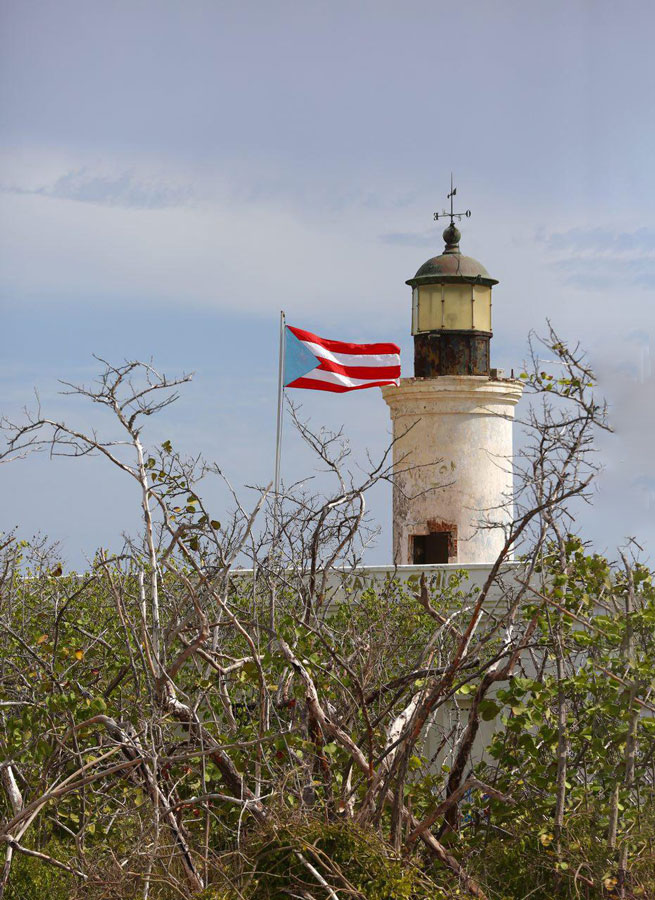
Isla Cardona is a tiny gem peeking out of the crystalline blue waters of the Caribbean Sea at the entrance to the harbor of Ponce.
Isla Cardona covers roughly six acres of dry forest ringed by sandy beaches and crowned by the 1889-Spanish colonial lighthouse that caps this idyllic offshore hideaway. The Cardona Island Light, which is accessible and still in operation, is listed on the U.S. National Register of Historic Places. The islet — part of a pristine archipelago that includes Caja de Muertos, Gatas, Morrillito, Ratones, Isla del Frio, and Isla de Jueyes — is overseen by the commonwealth’s Department of Environmental Natural Resources, which can issue overnight camping permits upon prior request.
And while the short trails on Isla Cardona are well worth exploring by foot, the real star of the show is the clear waters that surround it. The views out over the gleaming saltwater expanse are simply stunning. But don’t stop there. Strap on snorkeling gear and slip below the surface where a vibrant underwater wonderland awaits. The liquid lair is calm but replete with a kaleidoscope of marine life cruising around a maze of shore reefs and over sand-bottom stretches. Scuba diving excursions can also be arranged in advance.
With both briny and terrestrial adventures on tap around this untouched refuge, Isla Cardona awaits as the ultimate getaway. An easy escape from the everyday world along the route less traveled.
Although it sits just a jaunt from one of Puerto Rico’s busiest cities the secret is not yet out about this unspoiled paradise.
WaterLand Adventure offers day trip packages to Isla Cardona, with the catamaran leaving Ponce at 9 a.m. and returning at 4 p.m. Regardless of which tour package you choose there is no extra charge to bring coolers and other gear.
The Puerto Rico Symphony Orchestra: 60 years of musical excellence
Time appears to standstill at the Pablo Casals Symphony Hall when you listen to the crystalline voice of Puerto Rican soprano Ana Maria Martinez over the orchestra’s opening chords of The Jewel Song of the Faust opera by French composer Charles Gounod.
Time appears to standstill at the Pablo Casals Symphony Hall when you listen to the crystalline voice of Puerto Rican soprano Ana Maria Martinez over the orchestra’s opening chords of The Jewel Song of the Faust opera by French composer Charles Gounod.
The charisma of Ana Maria, who has shared lead with megastars like Andrea Boccelli and Placido Domingo; the commanding figure of conductor Maximiano Valdes together with the emotive and precise execution by the musicians formed the perfect ambiance for the 60th anniversary Gala Concert of the Puerto Rico Symphony Orchestra.
The 60-year commemoration of Puerto Rico’s most significant music ensemble, founded by legendary cellist Pablo Casals in 1958, took place in November 2018 in the Hall that shares his name at the Luis A. Ferre Performing Arts Center in Santurce – the place the orchestra has called home for the past 10 years.
The Puerto Rico Symphony Orchestra keeps a tight schedule that consist of a 10-month season (August – May) with weekly concerts at the Pablo Casals Symphony Hall as well as the prestigious Casals Festival and special community presentations.
According to Valdes, who is responsible for polishing the sound and broadening the orchestra’s repertoire for the past decade, “Puerto Rico should feel proud of its ensemble.”
“They are an extremely generous orchestra that gives it their all when they perform,” said Valdes, who has led the orchestras of Principality of Asturias and in Buffalo. “I feel the Puerto Rico Symphony Orchestra is highly ranked in the Americas, and without a doubt, ranks as the best in the Caribbean and one of the best in Latin America.”
And who would know better than Valdes who has also conducted main orchestras in Europe
such as the London Philharmonic Orchestra and the France National Symphony.
Besides musical excellence, the Puerto Rico Symphony Orchestra stands out for their unusual ability to play an ample repertoire that transcends the classical works of the 19th century and beginning of the 20th century.
Carlos Ruiz, executive director of the Musical Arts Corporation, says Puerto Rican musicians are among the most versatile at a global level and the orchestra executes classical music brilliantly but at the same time can perform with artists that play jazz, pop and Puerto Rican folk music.
“We have performed concerts with salsa singer Gilberto Santarrosa, Caribbean jazz composer William Cepeda, classical cellist Yo-Yo Ma, celebrated composer and conductor Krysztof Penderecki, and with reggaeton sensation Daddy Yankee at the Latin American Music Awards in Los Angeles,” Ruiz added.
From Beethoven to Broadway and Star Wars
One of the biggest challenges of the orchestra is to draw large crowds during its concert season in Puerto Rico, which residents are more prone to listen to popular music.
“When we (symphonic orchestra) performed the Symphonie Fantastique Berlioz and the sound echoes throughout the Hall, it’s a unique experience that enters one’s pores where you have to say wow, how incredible!” said Velazquez. “And when the people feel it, they may return another day and listen to a symphony by Mahler or Beethoven, and then they realize there is a lot of cliché in the notion that classical music is not entertaining; it’s like pop music, there are some good and enjoyable songs and others not so much.”
No one doubts that the inclusion of contemporary cinematic and theatrical music as well as the variation of popular genre helps attract a larger and more diverse crowd to the symphony hall.
With much success, the Puerto Rico Symphony Orchestra presented the music of John Williams Star Wars saga in 2015 and 2017 and Disney hits from Aladdin and Pocahontas.
This 2018-2019 season is absolutely no exception, which began with the music of Leonard Bernstein including hits from acclaimed films and/or plays On The Waterfront, and West Side Story as well as Walt Disney: A Decade In Concert,” Lord of the Rings, and a selection of favorite TV shows and Movies (scheduled for April 6) and a concert of Frank Sinatra’s Greatest Hits set for June 8.
It’s definitely all about the music.
Violinist Jose Daniel de Jesus remembers an experience that moved him during a past performance of a Disney music concert.
“The last song we performed was Disney’s It’s a Small World and I got emotional when I witnessed a 16 year old teen cry while I was playing and I could just imagine he was remembering something from his past possibly when he visited a Disney park as a child with his parents or maybe with a grandparent who passed away,” De Jesus said. “It just moved me to think that the orchestra and its music could transport a person to remember past experiences or simply unforgettable moments. That is the true power of music.”
Bet on casinos if you’re looking for action
On one recent night, the Puerto Rico Convention Center District was deceptively quiet with a few party buses idling by and a girl taking selfies beside the massive pillars of the iconic shell-like structure. At the luxurious Sheraton Puerto Rico Hotel lobby, a few couples were lost in their conversation over drinks, while others lined the bar to partake of liquid spirits and the latest entertainment emanating from screen above.
On one recent night, the Puerto Rico Convention Center District was deceptively quiet with a few party buses idling by and a girl taking selfies beside the massive pillars of the iconic shell-like structure. At the luxurious Sheraton Puerto Rico Hotel lobby, a few couples were lost in their conversation over drinks, while others lined the bar to partake of liquid spirits and the latest entertainment emanating from screen above.
But inside the casino, it was a different story. The room buzzed with the sounds of people and pleasure, the bright lights of giant slot machines, and the music of a band that was equally as adept at local and U.S. rhythms. Animated conversation punctuated the music at the packed bar that dazzled under the light of a resplendent chandelier.
Suddenly, the band broke into a lively rhythm and a singer intoned a familiar tune: Happy Birthday to You.
A casino may not seem likeliest spot to celebrate a birthday but that just shows how Puerto Rico casinos are no longer just a place to pursue jackpots. Island casinos have transformed into one of Puerto Rico’s newest entertainment alternative where the public can seek diversion and visitors to the island can get a taste of the local color, not to mention try out their salsa moves.
“Casinos have reinvented themselves,” said Ismael Vega, general manager of the Casino Metro. “They’re a place where you can have a drink, enjoy music, where there is safety and Wi-Fi. It’s no longer where you go play.”
That’s not to say that casino play and games of chance have taken a back seat. Casinos still have a solid clientele of aficionados and you’ll find serious play at the roulette and black jack tables and the feature latest evolutions in gaming. Visitors who like to play will love that local casinos’ enticing promotions and special drawings tied to play and featuring trips, cars and cash. But by expanding casino offerings to include different kinds of live entertainment and a dance floor for the nimble, casinos have boosted their appeal and are a draw for anyone looking for some fun and entertainment. Not only do casinos have their own bar, but they often sport their own restaurant or deliver from other restaurants within hotel premises.
Live musical entertainment and broadcasting major sporting events are by now a staple at island casinos and can be enjoyed primarily on weekends, with some hotels bringing in local or outside groups for special occasions.
Casino Metro at the Sheraton Puerto Rico, the largest casino on the island and that is celebrating its ninth anniversary, offers live music at night from Thursday through Sunday but, at least once a month Metro Stage Live presents a special show. Past acts have included a magic show, a troubadours’ competition, and performances by the likes of Pedro Capo, El Gran Combo and Grupo Mania. The casino, that has 27 table games and 474 slots, has a video wall as its focal point where boxing matches, movies and promotions are showcased.
At the Costa Caribe Casino, at the Hilton Ponce Golf & Casino, you’re likely to hear groups playing salsa and merengue on Fridays and Saturdays but on Sundays things get mellow and the trio groups that perform take listeners back to the good old days with Bohemia music. One popular entertainer who gets invited several times a year to perform at Costa Caribe is troubadour Julio Cesar Sanabria. He is an admired performer of decimas, jibaro country music rooted in medieval Spain and traditionally played with a cuatro, guitar and güiro, or scratch gourd. According to Casino Director Samuel Alicea, Sanabria has no trouble, if asked, turning the first name and last name of a casino client into a rhyme for a decima.
Miguel Vega, president of HI Development PR Corp., which runs Tropical Casinos at the Hyatt Place in Bayamon and Holiday Inn in Ponce and Mayaguez, said all three casinos hold special events on holidays like Christmas or observances like Valentine’s Day, Father’s Day and Mother’s Day. Entertainment at the Tropical casinos includes live music and stand-up comedy. They even celebrate the Fiestas de la Calle San Sebastian, the traditional four-day festival honoring Saint Sebastian that is held every year in old San Juan around mid-January. The Fiestas, which draw hundreds of thousands of people to the cobbled streets of the old city, feature musical events, art shows, and a parade of characters representing the folklore of Puerto Rico, including the Cabezudos, large papier mache faces of famous folks.
Another casino whose entertainment calendar celebrates the local culture is Oasis Casino at the Embassy Suites by Hilton in Isla Verde. The casino, which has 180 slots and seven casino tables, considers itself one of the best on the island for its multi-level progressive jackpots and computerized player tracking system. Every summer the casino holds a month-long Fiesta Patronal patterned after the patron saint feasts held by Puerto Rican towns island-wide. To make the activity more realistic and colorful, artisans are invited to sell their crafts and carts are set up to sell local delights such as piraguas (syrup covered snow cones), ice cream, and chicharrones (fried pork rinds).
The hotel also holds its version of the Fiestas de San Sebastian except that it calls them Las Fiestas de la Calle Oasis. As part of the event, which also takes place in January, t-shirts are sold and are quite a collectible item. When not playing at the casino, a person is likely to go there to watch a sports game on one of the casino’s giant screens, eat dinner at El Patio restaurant then step to the bar area to listen to music and dance. Live music is played on week-ends and leans towards merengue, salsa and Bohemia.
Starting in January, Oasis will begin a renovation of its 7,000-square-foot space to be carried out in sections so as not to disrupt normal operations. Cosmetic improvements will include the ceiling, rugs and new tablecloths for the gaming tables.
The San Juan Marriott Resort & Stellaris Casino in Condado has music on week-ends not inside the casino but in the nearby lobby area. The hotel hires bands to play varied types of music and every two months there are private concerts for casino members. The Ballroom brings in international artists and famous local talents like Francisco Cespedes, Danny Rivera, and the Sanabria Family. Other shows booked by the hotel include comedy and impressionist acts and pay-per-view boxing events.
At the Hyatt Place in Manati, a short distance from Puerto Rico’s stunning Mar Chiquita Beach, the Casino Atlantico offers a changing program of entertainment at its popular Blu Bar. There is live music on week-ends and performances by the likes of Tully Diaz, Rafael Jose, and Son Ardiente. With 8,800-square-feet of space and 303 slot machines in addition to six gaming tables, Casino Atlantico is the newest casino on the island, having opened five years ago.
Puerto Rico currently has 16 casinos. Some casinos open all night, others have shorter hours of operation. One thing they have in common, though, is holding regular promotions designed to encourage players to visit more often and increase their wagering. In September, for example, one lucky player won a $20,000 Corolla in one of many promotions the Oasis carried out throughout the year. Another popular prize is cruises and Oasis has gifted cabins on cruises sailing to the Bahamas, Cuba, the Caribbean and Mexico. At the Ponce Hilton, the casino celebrated its 25th anniversary this year by disbursing some $25,000 in cash prizes, including a grand prize of $10,000.
Of course, if you are a regular player you might consider becoming a casino member, which confers any number of benefits and privileges. But even without a membership card, players get courtesy drinks and snacks while they play. At Marriott’s Stellaris, players get courtesy refreshments, beers, liquor, coffee, chocolate, and piña coladas. For a snack, they are served hot dogs, hamburgers, sandwiches, soup, or oatmeal. On special days, ice cream, and complete meals. They also have a Chinese restaurant inside the casino – fresh food at a moment’s notice. Players can accumulate points which they can exchange for food, cash or hotel stays.
Bomba!
A hands-on exploration of Puerto Rico’s powerful expression of African heritage.
A hands-on exploration of Puerto Rico’s powerful expression of African heritage
A short drive from San Juan’s international airport, the vibrant oceanfront community of Piñones is a feast for the senses.
A constant sea breeze is infused with the scrumptious scent of criollo food and carries a Caribbean-infused soundtrack from dueling stereo systems mixed with crashing surf.
At the intersection where the breathtaking blues of the Atlantic Ocean meet the emerald maze of the island’s largest mangrove forest, Piñones offers a wide range of sun and sand activities from bike rides along the beach to fishing for tarpon in the lush Torrecillas Lagoon.
Soaking up the rays, barefoot and cold beverage in hand is surely a great way to pass the day – or several. But many modern travelers are looking past postcard perfect panoramas to unwind the threads of Puerto Rico’s rich cultural fabric.
Piñones provides a unique opportunity to dig deeper into Puerto Rico’s powerful expression of African heritage -bomba, the drum-driven musical genre for dance that stands as perhaps the island’s oldest indigenous musical tradition still being practiced today.
Bomba can be characterized as the beating heart of an Afro-Caribbean culture –derived from West Africa, through the importation of slaves to Puerto Rico from that region, which has survived myriad challenges and continues to thrive in the shadow of San Juan and beyond. Playing an important role in preserving that legacy is the Corporacion Piñones Se Integra, or COPI, a community-based nonprofit organization that uses the Cultural and Ecotouristic Center of Piñones that sits at the eastern entrance to Piñones at the confluence of the Boca de Cangrejos Bay and the Torrecillas Lagoon.
Founded nearly two decades ago by sociologist and social worker Maricruz Rivera Clemente, COPI works to improve conditions for Piñones residents, businesses and visitors through a range of initiatives including community empowerment and microenterprise development.
Front and center in the effort is bomba.
“Bomba is the base of everything,” Rivera Clemente tells Bienvenidos, noting that COPI’s bomba workshops and classes, Afro-Puerto Rican music shows [bomba y plena] are open to the public and vital to the mission to preserve and raise awareness about this cultural cornerstone.
In the process, COPI provides an unmatched opportunity for visitors and corporate groups to grab a hold of Puerto Rico’s cultural roots through active participation in bomba classes (the second and last Friday of the month), putting their hands to work pounding away on barrel drums or putting the rest of their bodies through the paces on the dance floor replete with traditional twirling skirts.
Typically, a bomba starts with a female solo voice who sings a phrase evoking a primitive call. The chorus makes an antiphonal response supported by the musicians who provide the 2/4 or 6/8 rhythm with various percussion instruments. Meanwhile, the dancers proceed with their movements, in pairs and without contact, taking turns challenging the drums.
While COPI runs regular scheduled bomba workshops and shows, corporate groups can always reach out to set up group classes. COPI also hosts performances by its Majestad Negra folkloric ballet troupe.
Bomba team building classes are fun and, more importantly, can be tailored to improve performance and enhance workplace culture.
“Everyone is welcome and everyone can take part,” Rivera Clemente says. “We want to share this with the world.”
A melting pot of Spanish, African and Taino traditions permeates Puerto Rico, with those three pillars forming a unique identity of which islanders and members of the far-flung diaspora remain fiercely and justly proud. The island’s cuisine, vocabulary, architecture and arts are all informed by this heady mix.
While bomba has been sometimes billed as a blend of the three pillars of Puerto Rican culture, it is more accurately celebrated as a living reflection of the island’s African heritage, a vital plank in the cultural base that cannot be overlooked or verstated.
Bomba was built from hardship, pain and deprivation. It sprang from the musical traditions carried by Africans in bondage on 17th century slave ships to Puerto Rico, branching out over time to include well over a dozen distinct rhythms with discrete dance steps for each.
Bomba took shape on Puerto Rico’s sprawling sugar plantations as a multi-faceted form of expression, of communication and, at times, rebellion, and it was carried deep into dense havens for escaped slaves such as Piñones.
As the Smithsonian Museum’s Folkways Magazine states, “To them, bomba music was a source of political and spiritual expression. The lyrics conveyed a sense of anger and sadness about their condition, and songs served as a catalyst for rebellions and uprisings. But bomba also moved them to dance and celebrate, helping them create community and identity.”
But bomba is not an art form relegated to the museum shelves. It is alive and well and surging along new avenues as artists push its percussive pulse across genres, opening new horizons in the process. Purists need not fret, traditional bomba is also in practice, thanks in part to efforts to preserve and share this iportant part of Puerto Rico’s cultural legacy by COPI.
COPI’s classes concentrate on the seven classic rhythms that define bomba in Piñones and in the broader municipality of Loiza of which it is part. Participants will enjoy hands-on instruction in bomba drum rhythms and dance steps.
“We want people to know they shouldn’t feel scared. The idea is to play and dance as if nobody is watching,” Rivera
Clemente says. As a donor-driven nonprofit, COPI relies on donations as an important revenue source to continue its mission, so participants should be prepared to give back a bit for the gift of bomba.
Plan to make at least a day of your visit to Piñones as COPI also rents kayaks and bicycles through the
AcuaNatura and CicloNatura micro-enterprises, respectively. For more information you can enter www.copipr.com.
And make sure to bring your appetite for Puerto Rican fare and thirst for new adventures.
Land of mixology
Whether you fancy the classics like a Moscow Mule or an Old Fashioned, or seek the thrill of a hot new alcoholic elixir, you won’t be disappointed. The island’s urbane cocktail map leads to an eclectic mix of hip bars and lounges where dedicated mixing professionals whip up memorable cocktails for today’s discerning drinkers.
Add artfully crafted cocktails to your list of things to look forward to when visiting Puerto Rico.
Whether you fancy the classics like a Moscow Mule or an Old Fashioned, or seek the thrill of a hot new alcoholic elixir, you won’t be disappointed. The island’s urbane cocktail map leads to an eclectic mix of hip bars and lounges where dedicated mixing professionals whip up memorable cocktails for today’s discerning drinkers.
Bars are aplenty in Puerto Rico, people are drinking and having fun, and there are plenty of beverage practitioners behind bar counters ready to satisfy the thirst for tantalizing libations.
Menus cater to the casual drinker or the cocktail obsessive. You’ll find the new, the classics, and the latest trends, like the current resurgence of Polynesia-inspired Tiki cocktails, heady mixes of high-octane rums and fruit flavors, syrups based on almonds, coconut or pineapple, cherry and banana liqueurs just to mention some of the ingredients that go into these favored concoctions.
Equally popular is the emphasis on health and farm-to-table. Cocktails made with vegetables and fruits are all the rage these days and Puerto Rico’s beverage practitioners are finding exciting ways of pairing spirits with unlikely partners such as spinach, cucumbers, beets, tomatoes, and fresh herbs like basil, sage, mint, or rosemary, some of which are locally sourced for an even fresher, healthy taste.
Thanks to competitions that advance brands and promote higher levels of creativity among the island’s bartenders, the opening of new bar concepts and the rise of the mixologist, Puerto Rico can pride in having a world-class cocktail scene.
“The cocktail scene in Puerto Rico has grown 150 percent in less than five years. We’re at the level of many cities in the world,” enthuses Roberto Berdecia, a World Class bartender and co-owner of several bars, including Jungle Bird on Canals Street, off the famous Santurce market, and the popular La Factoria in the historic section of San Juan.
Based in what was once old San Juan’s most iconic bar, Hijos de Borinquen (The sons of Borinquen), La Factoria is actually four distinctive bars within an old corner building whose rundown facade and maze-like interior affect a carefully cultivated environment of chick grunge, in the style of a grand movie set.
Soon, it will add another three bars: one on the second floor and the other two stem from the recent purchase of La Cubanita, next door to La Factoria. Actually, both businesses are part of the same building so connecting the new spaces was no problem.
“We have bartenders who in competitions rank among the top four in the world and bars that have won prizes at the national and international level. I always think we still have a ways to go, but I believe that’s how you keep growing,” Berdecia said.
Star bartender Luis Pagan from La Coctelera, a small but very pleasant bar on Loiza Street, near the Condado tourist area, agrees the cocktail scene is flourishing but finds the local palate needs to expand a bit further to be on a par with the leading drinking capitals of the world, “the island has very good bartenders and the level of creativity is growing,” said Pagan, who is considered among the island’s top 10 bartenders.
Further proof of Puerto Rico’s rising status as a land of mixology is the scheduled opening of a rarefied resource: a laboratory to foster experimentation and innovation in the craft of mixing drinks.
The brainchild of Berdecia and his Factoria partners, Leslie Cofresi and Pablo Rodriguez, the lab called Licoreria Miramar will be open to professionals and aficionados on a membership basis. The 4,000-square-foot space, in San Juan’s Miramar section, will have all the equipment necessary for users to explore new ideas and techniques.
Such creative laboratories dedicated to alcoholic beverages are not unheard of even if the concept owes credit to Spanish gastronomic superstar Ferran Adria whose famous restaurant el Bulli, on Spain’s Costa Brava, functioned as a laboratory for the creation of haute cuisine dishes. Adria popularized molecular gastronomy by applying principles of physics, chemistry, and biology to the preparation of food, creating spectacular new flavor sensations. Not surprisingly, the world of spirits was inspired to pick up this new science, bringing the art of mixology to a whole new level.
Basically, bartenders and mixologists aim for the same thing: to deliver a wow drink. Still, there are differences between the two roles. Bartenders know all the basic drinks and tend bar; mixologists spin the old classics into exciting new cocktails and create new taste experiences using different techniques. The two categories are not mutually exclusive: a bartender can also be a mixologist and vice versa.
Further proof of Puerto Rico’s rising status as a land of mixology is the scheduled opening of a rarefied resource: a laboratory to foster experimentation and innovation in the craft of mixing drinks.
Being a mixologist calls for a great deal of knowledge, according to Jorge Lopez Albarran, outgoing president of the Puerto Rico Bartenders Association. An affiliate since 1992 of the International Bartenders Association, the group, which has around 800 members island wide, has contributed to professionalizing the field through workshops, courses, and competitions whose winners go on to participate in international events, such as the upcoming Pan-American Cocktail Championship in Havana, Cuba, in August, and the IBA World Cocktail Championship to be held in Estonia in October.
Think of the mixologist as a type of polymath. As described by Lopez, he must know about spirits, wines, coffee, the pairing of foods and drinks, which spirits go best with cigars and chocolate. Lopez is an award winning master blender and consultant whose company, Gourmet Business Solutions, supplies ingredients like syrups used in making drinks and foods.
He also must know about molecular mixology, nutrition, and techniques like infusing and smoking cocktails. According to Lopez, “He must have more experience and years of study.”
Puerto Rico has various educational institutions that train people for work as a bartender or mixologist but this is a career that some take up without any formal training. Others come to it by chance as happened to bartender/mixologist Roberto Rodriguez, the owner of Tablas Restaurant in Salinas, on Puerto Rico’s South coast.
Rodriguez, who is 34, took a job in the banquets division of the Ponce Hilton Hotel to earn extra money while studying to be a physical education teacher at the Pontifical Catholic University of Puerto Rico in Ponce, where he excelled as an elite athlete. When a position opened up at the bar, he signed up out of curiosity. Besides, none of his co-workers was interested. He had no experience mixing drinks but he knew he was a quick learner and could rise to the challenge; besides, as he told his superior, “Tell me the recipe once and I can repeat it for the rest of my life.”
Although he went on to study cooking at the Institute of Banking and Commerce and bartending at the Puerto Rico Hotel School, Rodriguez admitted he wasn’t convinced bartending could be a permanent career but in 2009 he represented Puerto Rico at IBA’s annual competition in Berlin and “it opened my mind. It taught me this was a serious profession and you could live off it.” More importantly, “I didn’t win this competition but it made me completely fall in love with the industry,” Rodriguez said.
In 2013 and 2014, Rodriguez was part of the Puerto Rico Hotel and Tourism Association culinary team that won the Taste of the Caribbean competition. He has been named Bartender of the Year and Bartender of the Caribbean, also entering the mixologists’ hall of fame in these competitions.
A year and a half ago Rodriguez parlayed his experience working in hotel and independent bars into opening his own business, Tablas Craft Cocktail, a breezy open air restaurant in Salinas that features more than two dozen cocktails of his own creation that have been recognized in local and outside competitions. “I’m doing very well but it was a challenge after Maria,” he said.
La Coctelera’s Pagan is a slightly built young man with a hip hop haircut and an easy smile who looks younger than his 30 years of age. Turns out that he’s a natural at his craft and never formally studied to be a bartender. In fact, his first experience as a bartender was kind of a trial by fire. He was working in a restaurant while going to college and one busy December day the bar was short an employee and he was asked to fill in. He had made it a habit to watch the bartenders at work so he managed just fine.
Tending bar didn’t last long, however. Pagan said he dropped out of university when his mother fell ill and decided to study holistic medicine, going on to work for many years as a masseur. Four years ago he came back to bartending only to find to his surprise that the cocktail scene had changed dramatically: different cocktails, new ingredients, mixologists, homemade infusions.
To get up to speed he studied on his own and signed up for competitions. In 2016 he was a finalist in the Puerto Rico edition of the Diageo World Class event and last year he won the title of Bombay Sapphire Most imaginative Bartender by preparing two cocktails — one creative and the other a gin and tonic — in the assigned time of 13 minutes. Named “The Four Thieves,” his imaginative drink struck an intriguing balance of tastes and aromas from ingredients that included Bombay Sapphire gin, lime juice, spice-infused honey syrup featuring clove, eucalyptus and cinnamon, rosemary sprigs and sage leaves.
“Competitions are a challenge, they motivate you to be more creative,” he said in an interview at La Coctelera, which has a simple but appealing decor. Its centerpiece, next to the bar counter, is a striking wall assemblage of square and rectangular blonde-wood cabinets filled with colorful liquor bottles.
Puerto Rico has plenty of liquor competitions. According to Joel Vasquez, American Beverage Marketers’ Caribbean general manager, the island’s liquor distributors have created their own competition platforms “in order to give value to and elevate the knowledge about their brands.” International competitions with Puerto Rico editions also provide exposure for local participants.
Mixo Madness, an event developed by the Crafted Barrel Group for Rums of Puerto Rico, seeks out the best bartenders in various categories; winners go on to compete on the mainland at a grand finale pitting finalists from other states. Bartenders are rated on how well they mix flavors, knowledge of local rums, technique, even how they express themselves and interact with the public.
Another CBG event is the Speed 4 Tips competition: it tests the bartender’s speed, correct usage of techniques, ability to remember recipes, neatness and precision.
The biggest competition in the world is the Diageo Reserve World Class which is held in 60 countries, including Puerto Rico and since its launch in 2009, this competition “has supported, educated and inspired over 250,000 bartenders through its training and advocacy program,” according to the World Class Club website.
For participants, competitions are not just an opportunity to show off their skill, talent and professionalism but also a chance to learn from interacting with and observing other professionals. It doesn’t hurt that prizes include traveling, either nationally or internationally, as an ambassador for the sponsoring liquor brand.
Sometimes, a competition can prove a turning point for a bartender as was the case for Tablas’ Rodriguez, or even teach an important lesson as happened to Berdecia when he participated in the 2011 World Class Final held in India. He had won the Puerto Rico leg of the competition with two creative cocktails, one of which he named in honor of murdered Guatemalan environmental activist Myrna Mack. A variation of the Classic Rob Roy, a mix of Scottish whisky with vermouth and amaro, his version teamed up Guatemalan Ron Zacapa with vermouth, apple infusion and orange amaro.
Although he prepared for the international showdown by reading 10 to 15 books of recipes, Berdecia realized that winning wouldn’t be easy. So he recalibrated his attitude and decided that “instead of going to win, he would go to learn.”
Over at the Wine & Spirits Wholesalers of America in Las Vegas, Puerto Rican mixologist Joymar Herrin took the People’s Choice category with her concoction Sand Break made out of 3 Star Barrilito Rum.
Sand Break also has a pinch of orange, coconut, lime, egg white and a splash of Disaronno amaretto. Combine all ingredients in shaker and serve in a glass with its rim covered with brown sugar and coconut.
“Sand Break is my interpretation of the moment right before emerging in the ocean. Your feet are in the sand and the waves are breaking on the edge. As a good ambassador of my island I like to use quality products that presents something authentic and traditional of Puerto Rico,” said Herrin.
Puerto Rico’s bar scene is evolving and getting better. In recent years, bartenders have noticed a greater openness by local drinkers to try out new drinks instead of staying within the confines of a safe comfort zone.
Drinkers are more demanding and are changing consumption habits: they are more likely to savor a few cocktails than drink to excess, according to Tapas’ Rodriguez.
They also are more informed and will look up information about cocktails on the internet so they know if the bartender gets it right, Lopez said.
In a service industry based on making people feel good, the experience of having a great drink in a great bar is ultimately what brings repeat customers.
“People may forget your name, the drink you fixed for them and even what you talked about but they never forget how you made them feel, how you treated them, the service you gave,” said Pagan.
If the bar and bartender made the person feel good, you can be sure they’ll be back.
Altitude is the hottest new cocktail ingredient
Puerto Rico, known as the Culinary Capital of the Caribbean, has some amazing restaurants with stunning decor, but nothing beats a hot rooftop bar. Chilling on a rooftop never gets old especially when combining breathtaking views, tropical Caribbean breezes, and world-class cocktails.
Puerto Rico, known as the Culinary Capital of the Caribbean, has some amazing restaurants with stunning decor, but nothing beats a hot rooftop bar. Chilling on a rooftop never gets old especially when combining breathtaking views, tropical Caribbean breezes, and world-class cocktails.
Whether you are seeking spectacular views of the ocean, bay, cobblestone streets, historic homes, or a bustling city, you’ll find what you’re looking for at these cool, classy, and spectacular rooftop bars.
Eter Rooftop & Lounge
After a long day, the Eter Rooftop at Ciqala Luxury Suites in Miramar with its endless views of San Juan is the ideal place to watch the sunset, or take a dip in the pool accompanied by seasonal cocktails and scrumptious culinary Caribbean infusion creations.
The View: Miramar and San Juan Bay.
What to Order: “Mofongo” stuffed with skirt steak.
Insider Tip: Brunch of champions every weekend with free valet.
Location: 752 Ave. Manuel Fernandez Juncos, San Juan; (787) 998-1176.
Al Fresco Rooftop Wine Bar
Located on the corner of Sol and Cruz streets in Old San Juan, this super cozy terrace perched atop a colonial rustic orange painted building is also home to the quaint and amazing St. Germain Bistro & Café and The Mezzanine bar, which serve a variety of delicious, mouthwatering tapas and fine wines.
The View: Historic Old San Juan.
What to Order: Homemade sangria or wine with tapas.
Insider Tip: Thursday nights are Ladies Night! Enjoy 2-for-1 drinks from 4 p.m. to 8 p.m.
Location: 156 Calle Sol, Old San Juan; (787) 723-3427.
Punto de Vista
Located on the rooftop of the Hotel Milano in Old San Juan, Punto de Vista has a well-deserved reputation for serving the best mofongo relleno in the city. A glass wall spanning the width of the dining room offers its guests views for days while drinking and dining outdoors provides vistas of the capitol building, San Cristobal Fort, San Juan City Hall, the San Juan Bay and Calle Fortaleza below. So bring your camera or pop out your Iphone and be ready to capture amazing selfies with stunning sunsets in the background.
The View: Old City and San Juan Bay.
What to Order: Mofongo (garlic-flavored mashed plantains) with choice of chicken, shrimp, pork or skirt steak with fresh garlic sauce or sautéed in a white wine mango peach creole sauce.
Insider Tip: Tip: Buy 1 get 1 free mojitos every day until 5:00 p.m. and Medalla beer on tap for just $2.
Location: 307 Calle Fortaleza, Old San Juan;(787) 725-4860.
Olive Boutique Hotel
O:live Rooftop atop the luxury O:live Boutique Hotel is the epitome of chic and sophistication, where even its location screams exclusivity. It’s rooftop bar even has a pool, completing the ultimate oasis package. The Rooftop offers a taste of the high life inspired by the Mediterranean travels of the property’s owners, attentive and helpful staff that looks out on the high-rises of Condado and the waters of the Condado Lagoon.
The View: Condado Lagoon.
What to Order: Order a bite from the enticing menu of Sage restaurant operated by Chef Mario Pagan, one of Puerto Rico’s top chefs who participated in Food Network’s Iron Chef.
Insider Tip: Must try signature drink Kiwi Collins especially at sunset.
Location: Aguadilla St. #55, Condado; (787) 705-9994.
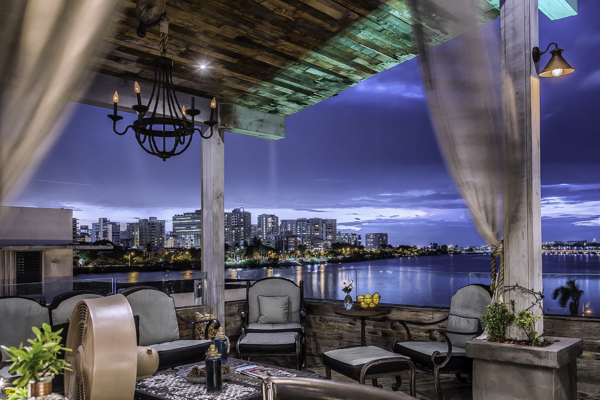
O:live Rooftop looks out on the high-rises of Condado and the waters of the Condado Lagoon.
La Terraza de San Juan
Nothing is more relaxing than taking a dip in a rooftop terrace infinity plunge pool while enjoying birds eye views of Old San Juan and sipping a tropical drink from its patio bar. Guests can chill out watching cruise ships come and go, admire beautiful sunsets over the Old City and San Juan Bay. On the very clearest of days, you can see El Yunque Rainforest, located at the eastern end of Puerto Rico.
The View: Old San Juan and San Juan Bay.
What to Order: Mimosas and smoothies.
Insider Tip: Tasty tapas and cocktail menu in evenings from Thursday to Saturday.
Location: 262 Calle Sol, Old San Juan; (787) 722-2014.
AC Rooftop
Indulge on delicious drinks, warm breezes, and superb dining at this unique rooftop lounge at AC Hotel San Juan that features a swimming pool and one-of-a-kind views of the bustling Condado district. This stylish property with a European urban vibe is steps away from the beach and has modern décor with contemporary furnishings.
The View: Condado District.
What to Order: Light tapas.
Insider Tip: Co-working space by day and hub of social buzz by night with live DJ and bands.
Location: 1369 Ashford Ave, Condado (787) 827-7280.
Bay Pool Bar & Grille
The rooftop Bay Pool Bar & Grille at the Sheraton Puerto Rico Hotel and Casino overlooks the marina in the heart of the city that captures vibrant ocean and bay views, as well as the city’s varied cityscape, from the gleaming condo towers of Condado to Spanish colonial splendor.
The terrace situated on the hotel’s fourth floor has plush sofas and cabanas, and a great bar and grill; there is nowhere else you will want to be during a splendid San Juan afternoon. There is an impressive menu of tropical cocktails and frozen drinks, and a simple menu that delivers with great taste.
The View: San Juan Bay and cruise port.
What to Order: Chino Latino wrap, fish tacos, mahi mahi skewers and guava chicken wings.
Insider Tip: Reserve your pool cabana early; voted one of the best hotel pools in Puerto Rico by US News.
Location: 200 Convention Boulevard in San Juan, (787) 993-3500.
Vistas
Vistas rooftop terrace at Vistas Restaurant and Cocktail Lounge has spectacular panned views of the city of Ponce.
Imagine sitting high above the town on a warm and sultry evening while sipping on a cocktail experiencing a cosmopolitan vibe while overlooking at one of the most recognizable landmarks in Puerto Rico, Parque de Bombas (former Ponce Fire House) with its emblematic black and red colors and Cruzeta El Vigia (The Watchman Cross). The staff at Vistas is friendly and the food is yummy as well.
The View: Nearly all of Ponce.
What to Order: Pasta, pork loin, St. Louis ribs, BBQ chicken and mofongo.
Insider Tip: $4 Margaritas Happy Hour every Tuesday and Wednesday and a 2-for-1 Mojitos and Sangria Happy Hour every Thursday from 4 p.m. to 11 p.m.
Location: Cristina Street #76, Ponce; (939) 350-2407.
So make sure you take advantage during your visit of Puerto Rico’s near-perfect year-round weather and stress-reducing views.
Puerto Rican stars in the global music scene
From contemporary jazz, to Carlos Santana’s Latin rock band,
to World Music; Puerto Rican top performers weave
traditional local sounds into a diverse musical production.
From contemporary jazz, to Carlos Santana’s Latin rock band,
to World Music; Puerto Rican top performers weave
traditional local sounds into a diverse musical production.
Two sax players – David Sanchez and Miguel Zenon- have established themselves as stars of the contemporary international jazz scene. Paoli Mejias, a master conga drummer, has paused in his solo career to travel the world as a multi-percussionist for Carlos Santana. And Tito Matos has been a critical figure in the renewed vitality of the Afro-Puerto Rican plena tradition and its contribution to World Music.
The quality and success of these performers solidify Puerto Rico’s ability to produce world-class musicians.
Sanchez and Zenon: from humble beginnings to world’s jazz elite
David Sanchez and Miguel Zenon, both jazz sax players, composers, and bandleaders; grew up and started their musical education in Puerto Rico. Both settled in New York City, where they developed highly successful careers and became international stars in their own right.
Sanchez, who is 48, has the looks and moves of a 28-year-old athlete. He walks into La Junta, a small club in Santurce’s Loiza Street checking messages on his cell phone, greeting friends and fans with a shy smile, wearing bright green sneakers, black slacks, and polo.
After a while, the leader of the local jazz trio performing that night calls Sanchez on stage, and he plays two tunes ending with a vibrant, engaging solo that sends the crowd its feet. It is a feature guest performance, and a sort of aperitif to promote his concert “Carib” — a blend of Afro Caribbean, Haitian, and Puerto Rican influences — held the following weekend at Old San Juan’s historic Tapia Theater.
After high school, Sanchez won a scholarship to study music in Rutgers University in New Jersey where he took classes with masters like Kenny Barron and Ted Dunbar. Soon Sanchez jumped into the New York jazz scene with pianists Eddie Palmieri and Hilton Ruiz, and trumpeter Claudio Roditi.
But his career took off at 23 when he was recruited to play in the Dizzy Gillespie United Nations Orchestra. Mentored by the legendary Gillespie, Sanchez toured 27 countries and a hundred U.S. cities in three years with the band, drawing attention as the ensemble’s young virtuoso tenor sax player.
Sanchez went on to record eight albums as leader of his ensemble and earning six Grammy Award nominations. He won a Grammy for the CD “Coral” in 2005. Four of his releases have been named Billboard top jazz albums.
The CD “Carib,” which will be the first volume of a series, is scheduled to be released this year.
“The concept is a fusion of the Congo-Guinea traditions of Haiti with variations of the different Bomba rhythms and chants of Puerto Rico. It’s not only the rhythms but also the melodies and cadence of these folkloric songs that have inspired me,” he explained. Haitian music had a significant influence all over the region from Puerto Rico to New Orleans, he adds.
Last April Sanchez released the single “Canto,” inspired by Haitian folk chant. It is a haunting and intimate tune he dedicated to the memory of his wife Karla Davis Sanchez, who passed away at age 50 in August 2017.
Sanchez grew up in the town of Guaynabo listening to his parents’ records of classic Latin music greats from the 50’s and 60’s like Machito’s Orchestra and Tito Rodriguez’s big band. He sang with his mother and brothers in the church choir and began playing the conga drum at eight-years-old but took up the tenor sax at school by the time he was 12.
In high school, he got a hold of some Miles Davis, and John Coltrane records were wholly absorbed into jazz. “I wasn’t thinking about making it as a professional musician. I just loved it so much, and that journey took me to that path and next thing I knew I was playing with famous guys and thinking to myself hey I didn’t know I was going to get paid for this,” Sanchez recalled laughing.
The Grammy Award winner emphasizes the need to invest in art education on the island. He praises San Juan’s Free School of Music, where he and Zenon also studied.
“That’s a treasure, and you have to invest in it,” he said. “The graduates of that school play the first chair in the New York Philharmonic, like clarinetist Ricardo Morales. You have bassist Eddie Gomez, myself, Miguel Zenon in jazz. In other genres, from (rapper) Tego Calderon to (salsa singer) Gilberto Santa Rosa, are you kidding me? What governor or businessman can say they have had that much influence outside of Puerto Rico? Just think about it.”
After kicking off his tour in San Juan, Sanchez ended 2016 introducing his “Carib” project in Barcelona, Paris and the Jazz in Marciac festival in southern France. That year he performed as a featured special guest in the International Jazz Day Concert in the White House hosted by then-president Barrack Obama and First Lady Michelle Obama.
Earlier in March 2017, Sanchez performed in Puerto Rico Heineken Jazz Fest, the island’s most important yearly jazz event, which also featured Miguel Zenon’s Quartet.
He has continued presenting “Carib” throughout 2018 in concerts in San Francisco, Santa Monica, Phoenix, in the Earshot Jazz Fest in Seattle, and in Chicago’s Jazz Showcase. Sanchez alternates this activity with national and European tours with the San Francisco Jazz Collective, an all-star ensemble, of which he has been a member for the last five years.
The San Francisco-based collective has included Bobby Hutcherson and Joe Lovano among its members. Sanchez performs side by side with fellow Puerto Rican star Miguel Zenon, one of the founders of the group in 2004.
Zenon, who just turned 41, has a similarly brilliant career as an alto sax master, leader, composer, arranger, and educator. In 1996 he went to Berklee School of music in Boston after he decided not to accept a scholarship at the University of Puerto Rico at Mayaguez Engineering School, to pursue his musical goals.
After he graduated, Zenon went to New York and completed a Masters Degree in Performance in 2001 at the Manhattan School of Music starting a brilliant career playing with the David Sanchez group. He was mentored in this early stage by Sanchez, who was already established in the New York City and international jazz scene and had been impressed by Zenon’s talent since they met in Boston.
The path hasn’t been easy for Zenon who was born and raised until the age of 12 in San Juan’s Llorens Torres public housing project, one of the toughest in the city. Intelligence, talent, and hard work have been his recipe for success. “When I finished high school in 1994, there was no formal education in jazz in Puerto Rico, so I had to go out, but I didn’t have the money. Then I spent a couple of years searching for funding and working to save some money by doing all kinds of gigs; dance bands or whatever came up and teaching until I was able to get into Berklee,” Zenon remembered.
At the age of 24, Zenon started his recording career as a bandleader with a bang. The Miguel Zenon Quartet’s debut album, Looking Forward, was selected by the New York Times as the Alternative Jazz Recording of the Year.
Zenon has kept producing great recordings and performances in the U.S and worldwide receiving critical acclaim and obtaining multiple Grammy nominations. Jazz Review magazine All About Jazz hailed his second album, “Ceremonial” (2004) as a “head-on crash of Latin, Jazz and Classical traditions–modern Jazz at it’s very best.”
This mixture and exploration of influences is a big part of Zenon’s career as it is also true about that of Sanchez. In 2008 Zenon became a MacArthur Fellow, and the institution described him as “creating an entirely new jazz language for the 21st Century.” A fellowship from the Guggenheim Foundation supported his album, “Esta Plena,” exploring the traditional plena rhythm of Puerto Rico.
Zenon explores multiple angles with straight-ahead jazz, classical and Latin jazz and Caribbean folk influences but he sees it as a reflection of where jazz music stands today. “I’m from a generation that grew up around very global and inclusive jazz; one that is opened up to include information that comes from other art forms, like literature. It’s the time we live in, and the music reflects that. It also reflects my need to discover myself as a Puerto Rican, as a Latin American musician in the jazz scene and to see what I have to give,” Zenon explained.
The Miguel Zenon Quartet has been together for 15 years and features drummer Henry Cole, also from Puerto Rico, Venezuelan pianist Luis Perdomo, and Austrian-American bass player Hans Glawischnig-Klavishnik with Zenon on alto sax. Their last album, “Típico,” was released in February 2017 and has been played by the quartet in Europe, America, and Puerto Rico.
One of Zenon’s favorite projects is the Cultural Caravan, a series of free concerts that he produces in rural small towns on the island, introducing the classics of jazz to audiences that generally are not exposed to this music.
“We have done eleven concerts in five years, and I really enjoy it,” says Zenon, who usually starts with an educational talk about the music they will perform and organizes the Caravan with money from donations and out of his own pocket. “We use jazz to expose a cultural experience to society; I do it with jazz because that is what I can offer, so I see it as a cultural investment.”
Zenon continues to tour with the S.F Jazz Collective, where he is the senior member and only remaining founder. In May, the ensemble finished the Spring Tour with gigs in New York’s Jazz Standard, Detroit, Denver, and San Francisco, where they played originals together with arrangements by Miles Davis. In October, they will put together a new season dedicated to the music of Brazilian composer Carlos Antonio Jobim and kick off their Fall Tour on the West Coast and two weeks of concert dates in Europe.
Zenon, who is also a professor at the prestigious New England Conservatory of Music in Boston, will release a new album in late September of his compositions for Alto Sax and String Quartet titled “I am the Tradition.”
“It combines jazz elements, contemporary music and folklore inspired in several Puerto Rican musical traditions such as the Rosary songs, the Three King’s Promesas, among others, and I’m very excited about it,” he said.
Tito Matos, all about the roots
Tito Matos is the leader of Viento de Agua, a band that will impress music fans in any part of the world with their afro Caribbean rhythms mixed with sharp jazzy arrangements and a pulsing beat.
In 1994 Matos went to City University of New York to study landscaping but began playing with Los Pleneros de la 21, New York’s leading plena group. He made a name for himself in the big city. In the ten years, he has lived in New York; Matos has collaborated in musical fusions with pop superstars, jazz artists, and Salsa greats.
Those gigs include a Latin percussion performance with Celine Dion and Gloria Estefan at Radio City Music Hall and performances and a recording with Puerto Rican mega pop star Ricky Martin.
In 1997, Matos founded Viento de Agua with reedman and arranger Ricardo Pons. The 13-piece band created essential pathways in the evolution of Puerto Rico’s bomba and plena African rooted genres.
Matos returned to Puerto Rico in 2004 and reconstructed Viento de Agua on the island where it remains active. The band has released three albums and work in two different formats – the 13-piece group and a smaller version of six or seven players.
A third version of the ensemble, dedicated to straight ahead plena music, is made up of pandereta drums and chants. It mainly does gigs at pubs, small clubs or folk music events and is known as La Maquina Insular.
Matos, known for his engaging onstage persona, is highly regarded around the world as a premier performer and expert in bomba and plena and other Caribbean rhythm’s. Last year the 49-year-old musician was at Austria’s Vienna University offering workshops for music teachers. In France, he also conducted workshops and played the music for dance performances. His Viento de Agua band has been featured in the American Folk Music Festival in Bangor, Maine, and the Smithsonian Folk life Festival in Washington D.C., which is considered the premier world music festival.
Matos has also increased his touring activity outside of Puerto Rico. “We have just returned from a tour that took us to New York, Chicago, and San Francisco. In June, we’ll be in Maryland with La Maquina Insular, and in September we’ll be performing with our large band, Viento de Agua, in the North Carolina Folk Festival in Greensboro, so we’re on the move. The Puerto Rican diáspora in the U.S. has been very supportive of local musicians, especially those of traditional genres, inviting us to perform and even funding events in the island,” Matos explained.
One of the things Tito Matos enjoys about performing his music for an international audience is that people from very different countries and cultures will respond enthusiastically to the mix of plena and other Caribbean sounds that his ensembles play.
“Plena has a simplicity to it. And when it is well played, when you get to feel it, it enters through your feet, gets into your belly, and you need to move and dance,” Matos said with a laugh.
Paoli Mejias – master drummer,on tour with Santana
Paoli Mejias never took a music lesson in his life. His love at first hearing with the sound of the Conga drums sparked an obsession that led him to become one of the foremost Conga drummers in the world and a master of multiple percussion instruments from different cultures.
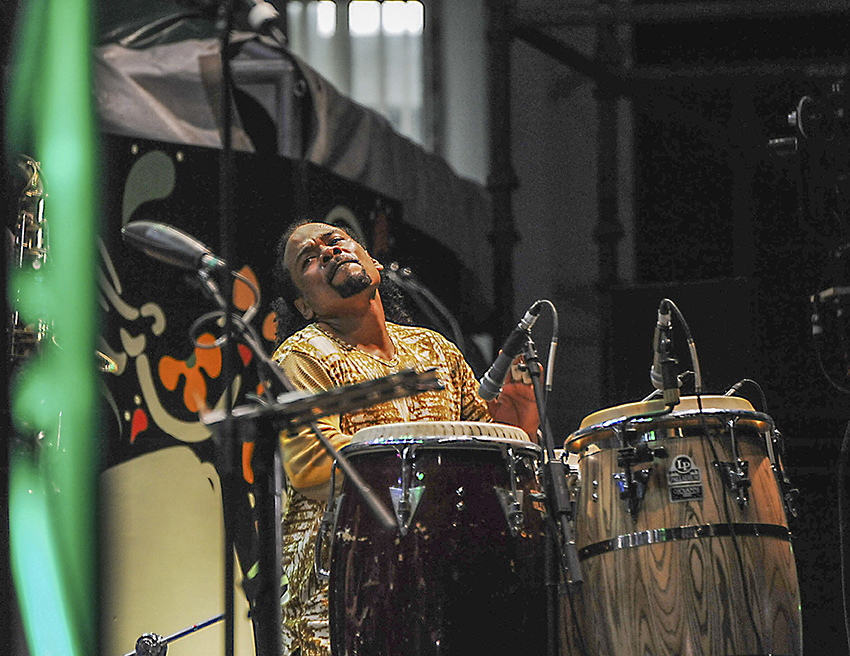
Plaza del Quinto Centenario (Quincentennial Plaza) was inaugurated in 1992 to celebrate the 500th birthday of the founding of the New World by the Spanish.
“It was an instinctive thing. When I heard the drums as a kid, I suddenly felt so connected to that sound. I felt the need to have a drum and play it. I got myself a little conga drum and just imitated the sounds I heard in records. I didn’t even have this dream about being a musician. I just did it because I felt passionate about it and would play all day without stopping until my family begged me to stop at night,” Mejia remembered with a broad smile.
By age 14, Mejias had moved to Toa Baja where he began to play with a Calypso group in the hotels of Dorado, and at 17 he participated in legendary rumba jam sessions in Rio Piedras with conga masters Giovanni Hidalgo and Richie Flores. Mejias jumped to the big stage at age 23 as a bongo and conga player for multi-Grammy laureate, salsa, and Latin jazz bandleader Eddie Palmieri. “There I made a name for myself because I was featured as a conguero doing many solo improvisations. We did France, Germany, UK, Spain, all of Europe and the U.S.,” he said. Reedman Paquito D’Rivera and pianist Chick Correa are among the other jazz greats with whom Mejias has performed.
In 2005 Mejias decided to go his own way and formed the Paoli Mejias Latin Jazz Quintet and released three independent albums. The first one “Mi Tambor” was nominated for a Latin Grammy in the Latin Jazz category competing with legends as Poncho Sanchez and Cuban pianist Bebo Valdes. For several years the quintet played on the international jazz circuit of festivals and clubs.
“I put together my own group because I like to break old patterns and rules and I hate doing the same things, the same way all the time,” said the 47-year-old percussionist. “I tried to incorporate other musical influences into the conga playing, sounds from India, Greece, Africa and Puerto Rico, for example. It used to be that Latin jazz congueros did mostly Afro-Cuban jazz more or less but I wanted to expand that, and I did.”
Then Mejias paused his career as a bandleader to accept an invitation he could not refuse. In 2013, he was recruited as the conguero and multi-ethnic percussionist in the band of legendary Rock guitarist and pioneer of the Latin Rock sound, Carlos Santana. For several years, Santana had used different percussionists and was searching the right person for a steady job, and he found Paoli.
“This is a big organization led by a megastar,” notes Paoli. “And it requires certain energy, a positive attitude on stage, and they found this in me. Carlos says that he sees the light in me, those are his words, not mine,” he laughed. “He told me that he sees in me something he expects of band members: to be someone that adds positively not only in the music but in the good energy, the discipline, the ability to get along with the rest of the band, and the idea is that this energy projects itself on the stage to the audience and everybody can feel it,” Mejias added.
The Santana band is always on tour doing 40 concerts a year in Las Vegas’ Mandalay Bay House of Blues where Santana is a resident artist. Mejias and wife Sarah Vogel recently bought a house in her hometown of Seattle, and they live part of the year there and part in Puerto Rico.
But most of the time Mejias is in Vegas or on the road with Santana and is continuously on the move. This year Mejias played with Santana in Bahrain, United Arab Emirates, as part of the major Grand Prix race, and toured South Africa, with concerts in Johannesburg and Capetown. “In two weeks we’ll be with Santana in Las Vegas where we do four months a year, and we will have two European Tours in the rest of 2018 that include cities in Spain, Italy, France, Finland, and Norway among others,” the master percussionist explained.
“I see this stage with Santana as a parenthesis in my career as a group leader, and at some point, I’ll be back because it’s important for me to be able to display my musical creativity and concepts to the fullest extent,” he said. But no matter how hectic and demanding his calendar with Santana may be, Mejias he has kept producing original music and releasing various single tracks.
“Then I realized I have enough material for a CD so I am working on the final mixing of two of those tracks and it will be ready for release this year,” he said. “My previous albums have been mostly of jazz music, but these have some salsa tracks, and also my original fusions and invented polyrhythm. They all have music and lyrics written and performed by me,” Mejias added.
“Oh, I forgot to tell you, my signature conga with Latin Percussion just came out, it’s called ‘Jazzambia,’ the name of one of my first recordings.” LP signature congas are considered a sort of Hall of Fame distinction for Conga drummers. “What’s so unique is that I was able to design my signature conga, which is not how it usually works, so I’m very happy about it.”
Luck of the Island
On the Island of Enchantment, casinos are much more than just a place to try your luck; they are entertainment destinations in their own right. It’s where world-class dining, legendary hospitality, live shows, and interactive gaming come together to create an unforgettable atmosphere of local fun and flavor.
Glitz! Glamour! Games! Gambling! It’s time for a night out at Puerto Rico’s world-class casinos for newbies or those who have a few sessions under your belt.
On the Island of Enchantment, casinos are much more than just a place to try your luck; they are entertainment destinations in their own right. It’s where world-class dining, legendary hospitality, live shows, and interactive gaming come together to create an unforgettable atmosphere of local fun and flavor.
To further improve the island’s gaming industry, multi-site progressive slots called Jackpot del Encanto were introduced to 13 casinos. These new slots allow customers to opt for a bigger prize of $20,000 or higher with betting a minimum of 40 cents and a maximum of $2.
Puerto Rico’s casinos are all conveniently located in or adjacent to some of the island’s most noteworthy hotels and resorts that are located along the gorgeous Caribbean coastline, and the most concentrated selection is found in San Juan and its surrounding suburbs. Isla Verde, a popular spot for visitors, is a fantastic area to start. This picturesque beachfront paradise is home to several high-rise hotels, many of which include casinos. A beacon of luxury, The Ritz-Carlton San Juan Hotel, Spa & Casino maintains the iconic brand’s signature level of swanky sophistication. The on-site The Casino includes traditional table games, more than 250 slot machines, and even luxury bingo seven days a week. At night, the chic bar and lounge next to the casino entrance pumps out live music and entertainment, and gamers can dine at cosmopolitan restaurants like Il Molino New York and BLT Steak.
At Casino del Sol at Courtyard by Marriott Isla Verde Beach Resort, guests can play the ponies with off-track betting during local horseraces. The casino also includes slot machines and tables, and the Picante Lounge features live Latin music and dancing, as well as cocktails and bites.
The intimate Oasis Casino at Embassy Suites San Juan Hotel is home to slot machines, seven gaming tables, and special promotions like bingo, multi-level progressive jackpots, and computerized player tracking systems.
In the exclusive oceanfront haven of Condado, the main drag of Ashford Avenue features upscale hotels, elegant eateries, local dive bars and, of course, spectacular casinos. San Juan Marriott Resort & Stellaris Casino includes more than 360 machines for players of all risk levels, ranging from penny slots to $25 buy-ins. The massive casino floor also houses 26 table games with the highest betting limits in Puerto Rico. Players can try their luck at blackjack, mini baccarat, Caribbean stud poker, Texas hold ‘em, craps, roulette, and more. The casino even offers free gaming lessons daily from 6-7 p.m. as well as a weekly poker tournament on Thursdays.
Down the road, Casino del Mar at La Concha, A Renaissance Resort also invites guests and passersby to try their luck for nonstop 24/7 fun at the tables and the slots. With three types of blackjack, craps, poker, and baccarat, as well as the only local roulette table with a Luminar system and display and plasma screens broadcasting everything from the biggest games to breaking news, there’s always something exciting happening here. If you want to take a break from the casino’s spellbinding energy and get a bite to eat, you can visit Perla seafood restaurant that features a wine cellar with more than 4,000 bottles and over 1,000 labels; Solera, for tapas by poolside; Komakai Sushi Bar, to taste delicious sushi, sashimi and signature rolls; or stop by Serafina for a lively Italian dining experience.
Don’t shuffle out of town without spending time at Casino Metro at Sheraton Puerto Rico Hotel & Casino, home to San Juan’s largest casino. The site boasts more than 400 slot machines from pennies to dollars and from reel to video games; and some of the hottest new games. It also the only casino in San Juan that features the island’s Jackpot del Encanto. Casino Metro also offers 16 table games, including pai gow poker, three-card poker, baccarat, blackjack and the first and only electronic roulette table on the island. In between hands, players can enjoy live entertainment at its Metro Stage Live showcasing some of the top local acts or take an excursion to the Metro Lounge for music, dancing, signature cocktails, and more. Casino Metro is also home to the Ultimate Fighting Championship in Puerto Rico, where every month the fights are aired for free via pay-per-view.
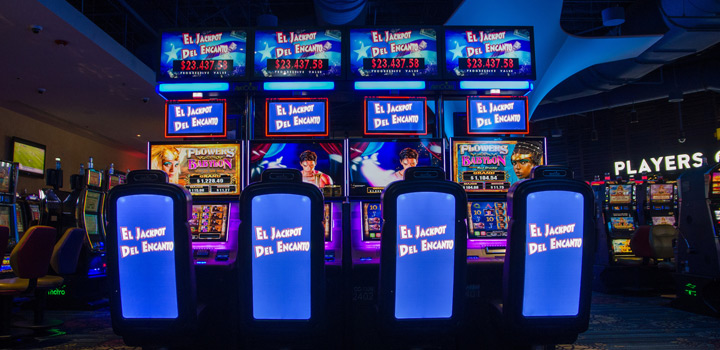
El Tropical Casino at Hyatt Place Bayamon also offer distinctive atmospheres for players to hit, stick, fold, or go all in at the tables and get mesmerized by the spinning wheels and ringing bells of the slot machines. It has over 350 slots with denominations from 1 cent to $25 including the Tropical Casino properties’ exclusive Dragon Spin and Tropical Jackpot, which provides bonus and progressive rewards. The progressive level payout is awarded to the customer at that specific Tropical Casino where the winning slot is situated, while the shared grand prize (where the payout increases as a group starting at $10,000 with a guarantee payout before it reaches $15,000) can be awarded at any of the Tropical Casinos. It also has table games such as Blazing 7’s blackjack, craps and roulette. When you’re not in the mood for any more gambling, guests can visit the Sun Lounge to listen to live music, sing some karaoke or have some cocktails, wine or craft beer.
Roughly 20 miles from San Juan in the northern coastal valley is the Wyndham Grand Rio Mar Beach Resort & Spa, which resides on the outskirts of El Yunque National Rainforest. This comprehensive resort is home to 10 on-site restaurants and lounges, two championship golf courses, a full-service spa and a killer casino. Between meals, guests can indulge their gaming fantasies at Rio Mar Casino and when the action gets too hot at the tables, they can head into the Players Club sports bar, which features multiple plasma TV screens and a lively, festive ambiance.
Located on Puerto Rico’s picturesque south coast, overlooking historic Ponce’s crystal Caribbean waters and rugged, majestic mountains are the Hilton Ponce, the Ponce Plaza Hotel, and the Holiday Inn Ponce; all of which have high-energy casinos.
The Casino at Costa Caribe Resort Ponce Hilton is open 24/7 and showcases more than 330 slots, blackjack, poker, roulette and craps tables. The fun continues at its El Bohio Sports and Pool Bar and La Cava Restaurant, a swanky eclectic venue perfect for sharing appetizers along with a glass of your favorite wine or cocktail. The Casino de la Plaza at the Ponce Plaza Hotel has an exciting range of table games including blackjack, craps table, roulette, and bingo. The Casino has over 260 state-of-the-art slot machines and offers weekly entertainment. Though, when your stomach starts rumbling louder than a slot machine that hit a jackpot, it’s time to take a break and indulge your culinary taste at the award winning Lola Eclectic Cuisine and grab a nightcap at VIVA Bar.
And the Tropical Casino at the Holiday Inn Ponce also delights gamblers, gamers, and guests alike. Besides having over 300 slots that includes the exclusive Dragon Spin and Tropical Jackpot, it also exhilarates its guests with table games like Blazing 7’s blackjack, roulette, mini baccarat, Caribbean stud poker available 24/7. It has an exciting monthly events calendar, provides live music and karaoke on weekends as well as special dates and has bingo along with weekly raffles that include cars, cruises, and much more.
If heading west, then the charming town of Mayaguez, the third largest city in Puerto Rico, is a must-see location. It is considered the capital of the west coast, and Mayaguez is known for its ports, theater of arts, and houses the only zoo in
Puerto Rico.
While you’re there, stop and visit the Holiday Inn Mayaguez and test your luck at its Tropical Casino. This fun-filled gaming and entertainment facility, which offers its guests over 360 slots including the exclusive Dragon Spin and Tropical Jackpot, also raffles up to $12,000 worth in prizes which includes giving away cars at least six times a year and to provide some local culture it invites artisans twice a year to sell local goods at its casino entrance. You can’t forget to mention that there is a Fat Tuesday’s right next door, a fun spot to embrace the Mardi Gras philosophy with a frozen daiquiris in hand.
No matter where you choose to let it ride, be sure to visit your casino’s guest services desk to snag a frequent player’s rewards card. Just show the host or hostess your driver’s license and you can start accumulating points to spend on food and beverage, take advantage of discounted hotel rates, and participate in special promotions and giveaways.
Whether you’re high-stakes player or a cautious beginner, there’s no better Caribbean island to test your luck than in Puerto Rico.

